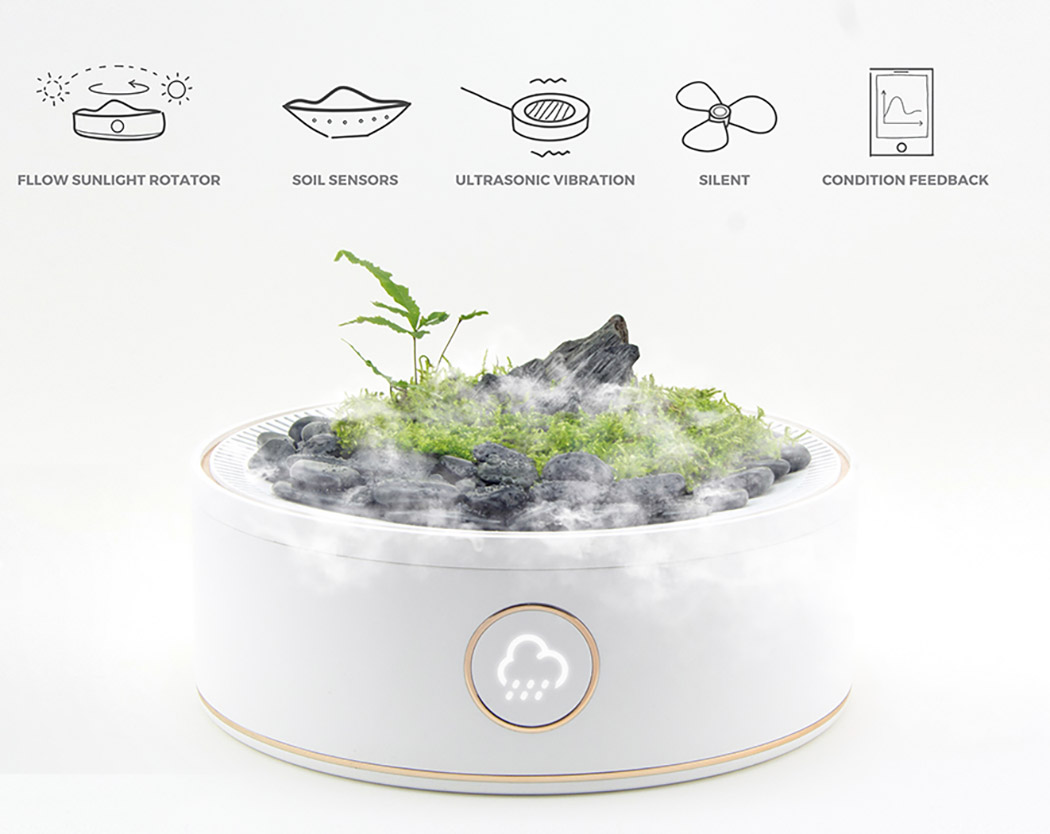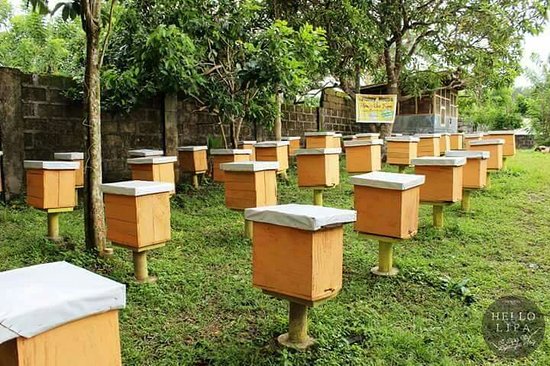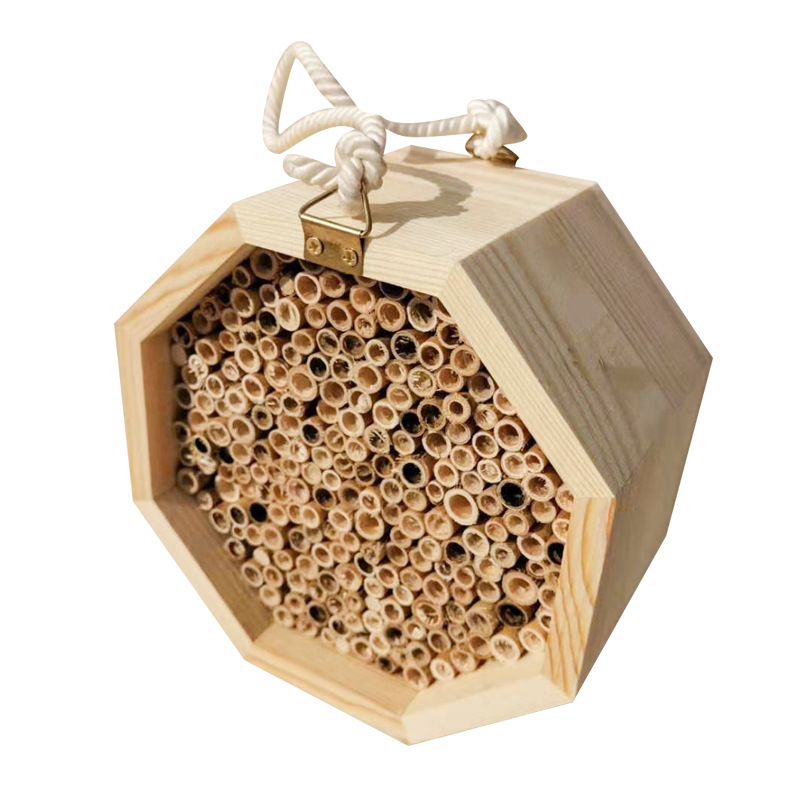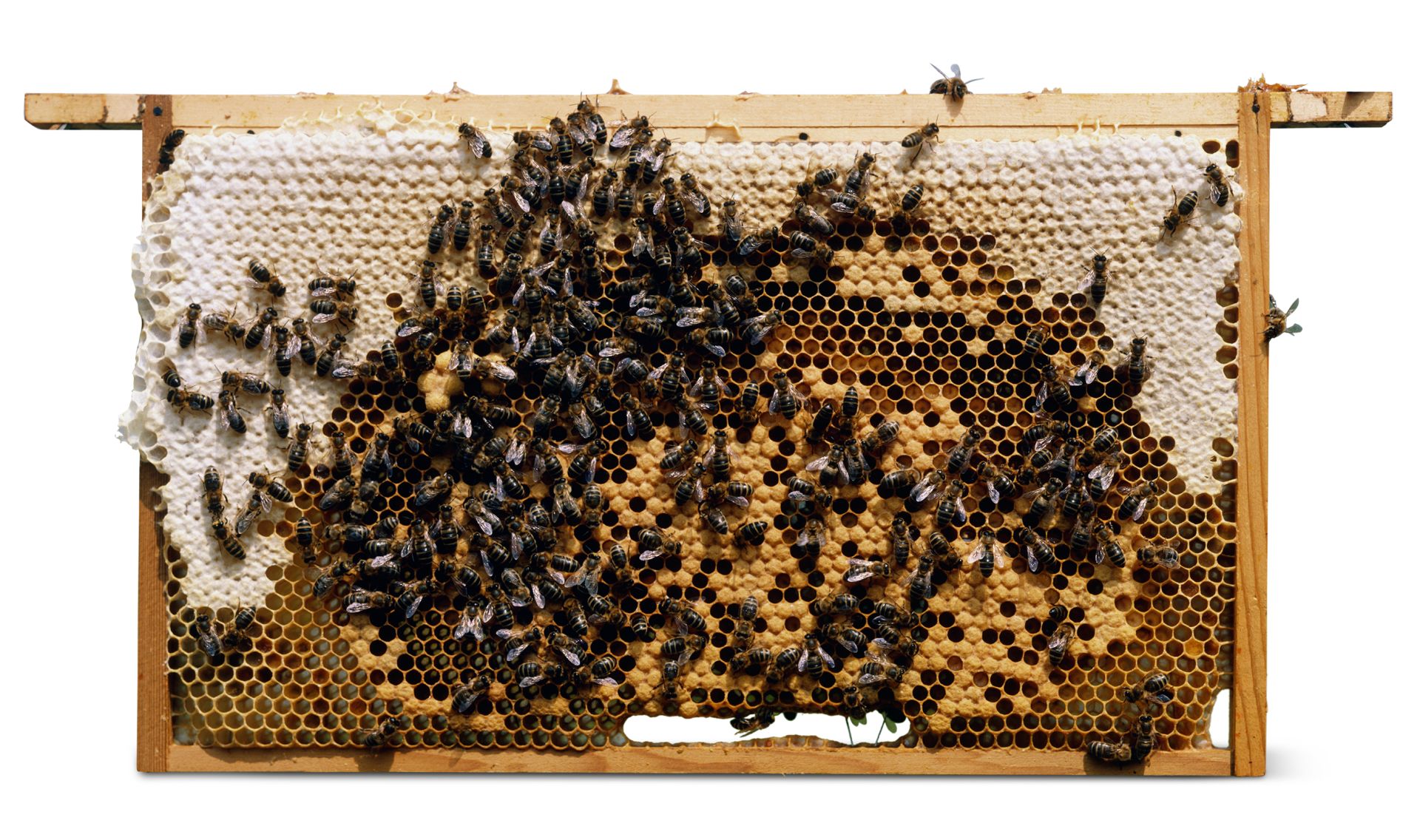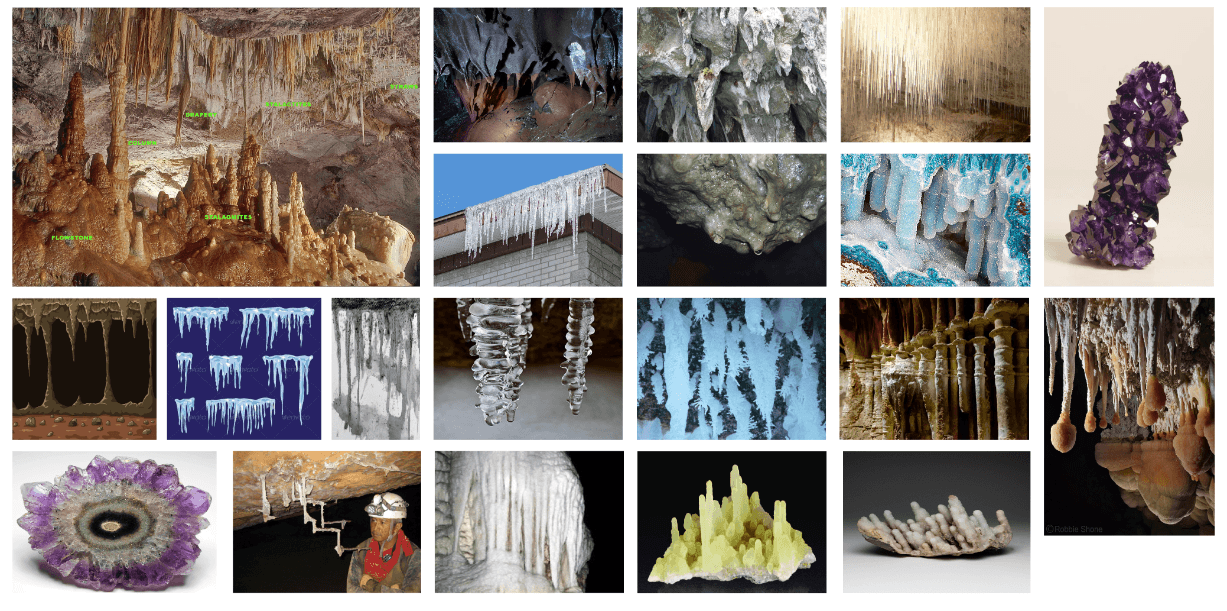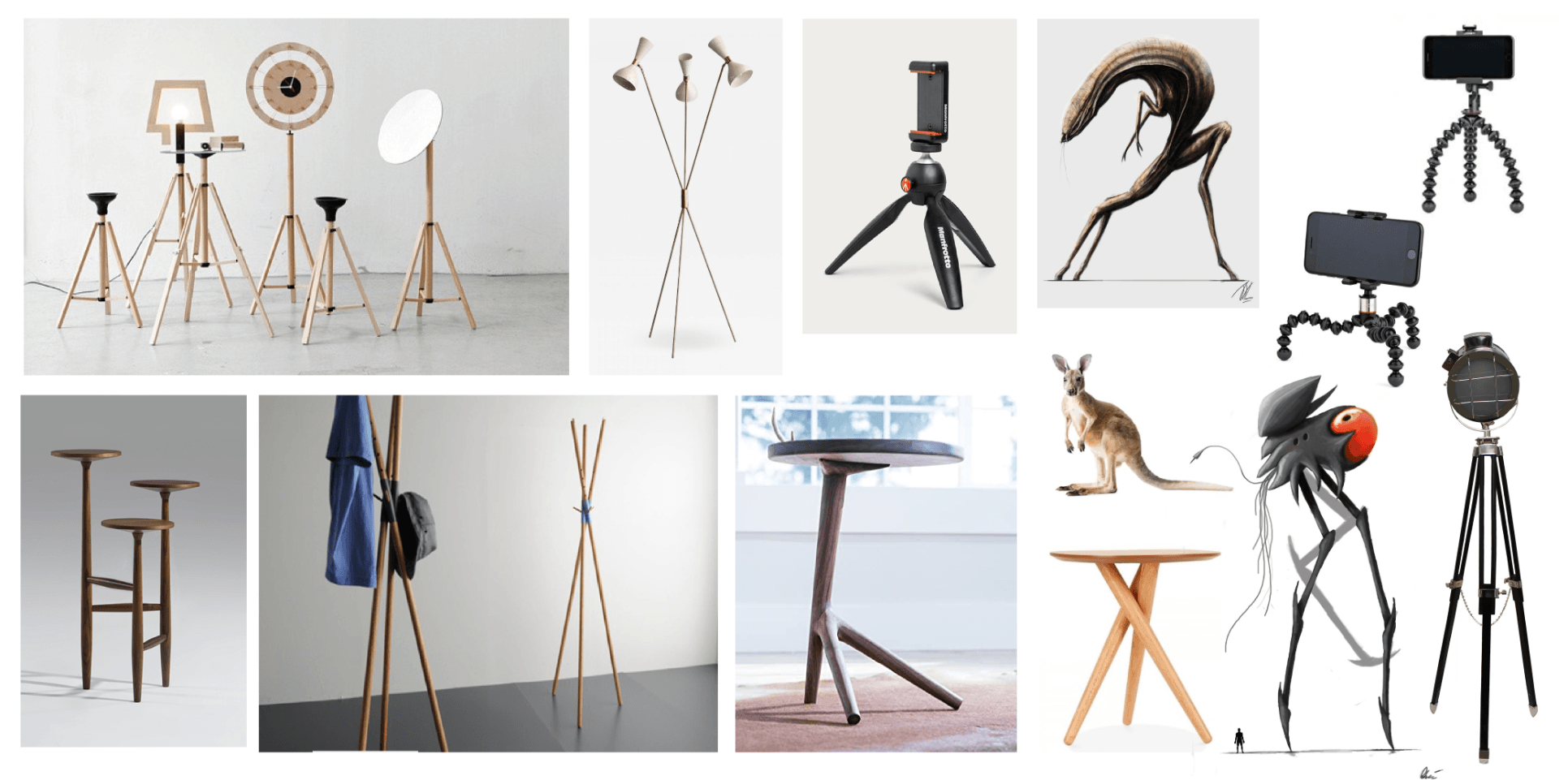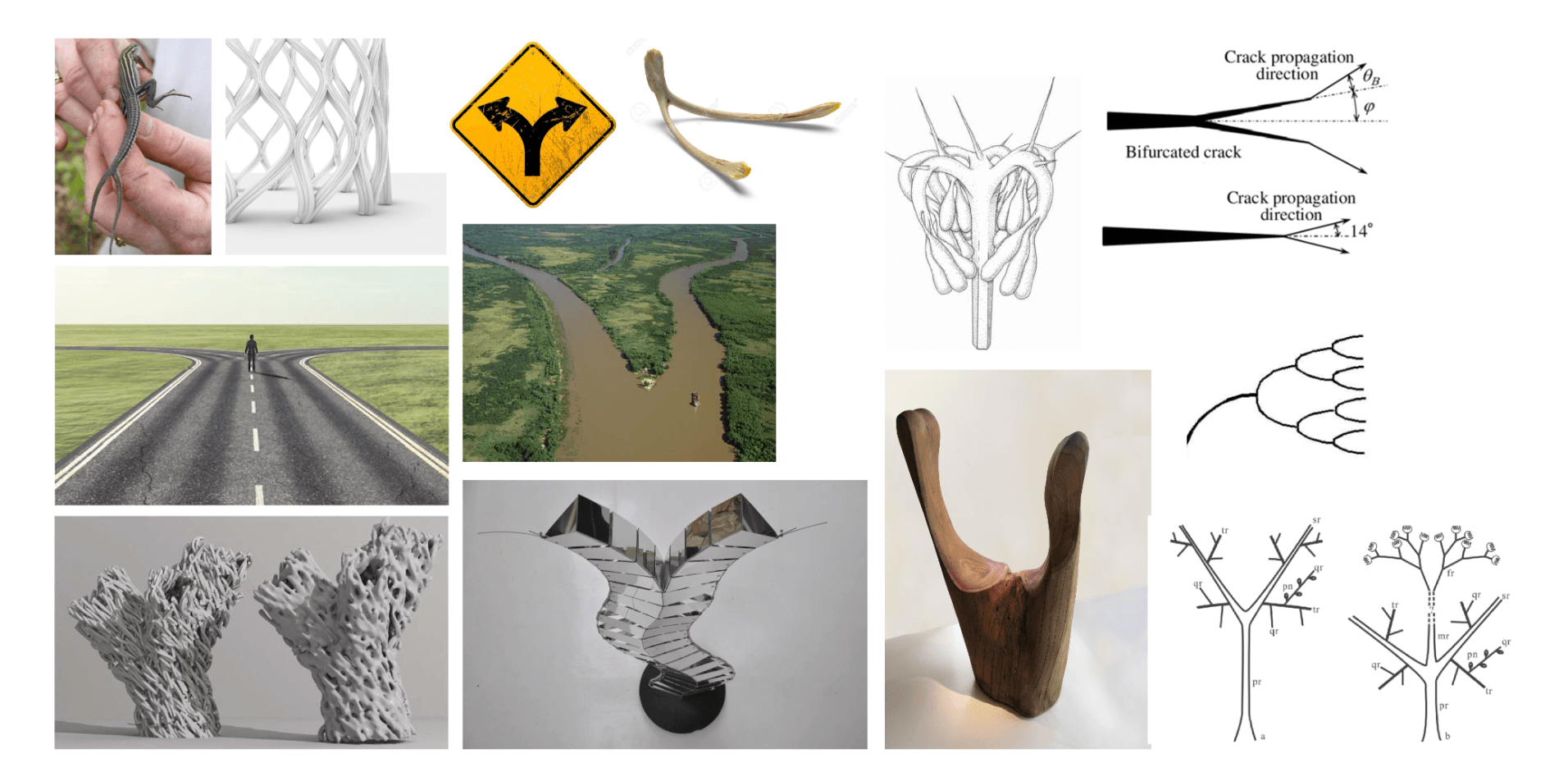BRIEF:
Connected products (fitness trackers, smart speakers) connect physical objects with the internet and each other, and are enabling new ways for people to interact with the environment and world around them. Conventional product integration with digital technologies, UI/UX design and services.
Possible connected products:
- Water bottle
- Air quality tracker
- Weighing scale
- Thermometer
- Object/Person/Pet location tracker
- Rain sensor
- Product of your choice
Design:
- Product form
- Product Interaction
- Smartphone/ Web browser app
- Consistent visual design and UIUX (btwn phone & prod)
- One sensor + one/two functions
IDEAS:
- Speaker that can detach to form an earpiece? eh…….
- Smart wardrobe + hanger system. Tells you which pieces of clothing you wear more often than others -> For people with a lot of clothes in their closets, to help realise that maybe they dont actually need so many clothes, or that they dont need the clothes they hardly use. Then, they can buy less clothes or give the unused ones away. Reduce, reuse. Or the wardrobe can collect data of which colors the user wears more, and recommend other colors that the user can get to match along?
- Smart hangers that monitors the weight of the items on it. Used to hang wet clothing. When the weight of the clothing stops decreasing, this means that the clothing is dry. An alert will be sent to you via a phone app. Could also track the amount of time it took for the article to dry, so that the user can use this information next time. Or if the system is smart enough, it could generate a list of timings like how long this particular fabric will take to dry today based on humidity and weather reports it collects (internet of things).
- Smart makeup storage that tracks how long you have had this product. Product information can be accessed through phone app, and alerts you if you’ve had the product for too long. Prevent you from using expired makeup? Or if for people with a lot of makeup, could be a similar idea like the wardrobe, tracks which products the user uses more; highlighting what products they perhaps dont really need…
- Smart watering can + moisture detector. Moisture detector can be docked into the watering can to download the data, or can be synced to the phone. Based on information collected by moisture detector, watering can will measure out the appropriate amount of water needed and indicate to user when they are filling it up with water; or user just fills up the whole can, then watering can will signal when to stop when water is enough. Phone app tracks the moisture detector records (and watering can data?). Phone app will also remind you if you have not watered your plants. If its a really smart system, it can also take into account the humidity and temperature to work with the moisture detector to recommend the amount of water.
- Smart sunlight detector. Placed in your plant pot or nearby, to track the amount of sunlight your plant receives, cause some plants need more light then others, and some months is brighter than thee rest. Solar panels track how much uv light absorbed. this electricity can be used as signal? Alternatively can be used for people who like to cleanse their crystals under the sun lollll, cause you cant leave it out for too long.
- Smart harness that looks like a sloth hugging the dog. Used to track the location of the dog, or could be a camera device (like the sloth eyes are cameras). Phone app will give you the location of the dog.
- Hanger idea for masks: track the number of times youve used washed the mask
CHOSEN IDEAS TO DEVELOP: Hanger for masks + smart pot
RESEARCH :
SMART HANGER
BASIS:
Because we are currently living in a pandemic outbreak, it has become the social norm to now wear masks out wherever we go. Some people use disposable masks that are instantly thrown away when they get home, but others use reusable masks that require washing every day or every few days at least. Generally, fabric masks can be rewashed many many times, but there are certain reusable masks that can only be washed a specific number of times before they are no longer recommended to be used. These washable masks with limited lifespan are often fabric masks with filtration layers. To ensure that the filters are still usable and able to protect us, we should really pay attention to the number of times the mask has been washed and follow the advisory.
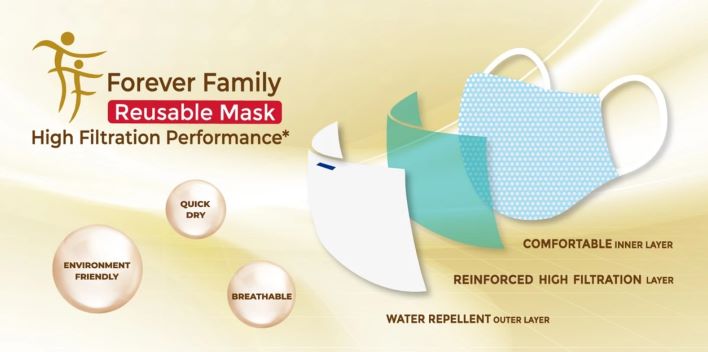
 Forever Family mask can only be washed 30 times
Forever Family mask can only be washed 30 times
CURRENT PRODUCTS:
- Hanger with built in dry cleaning functions. Volatilized air air-washes off unpleasant smells and kills clothing germs and molds without causing any damage to clothes. Ideal for suits, dresses, uniforms or outdoor jackets that are difficult to wash at home, Smart Hanger offers an instant cleaning option.

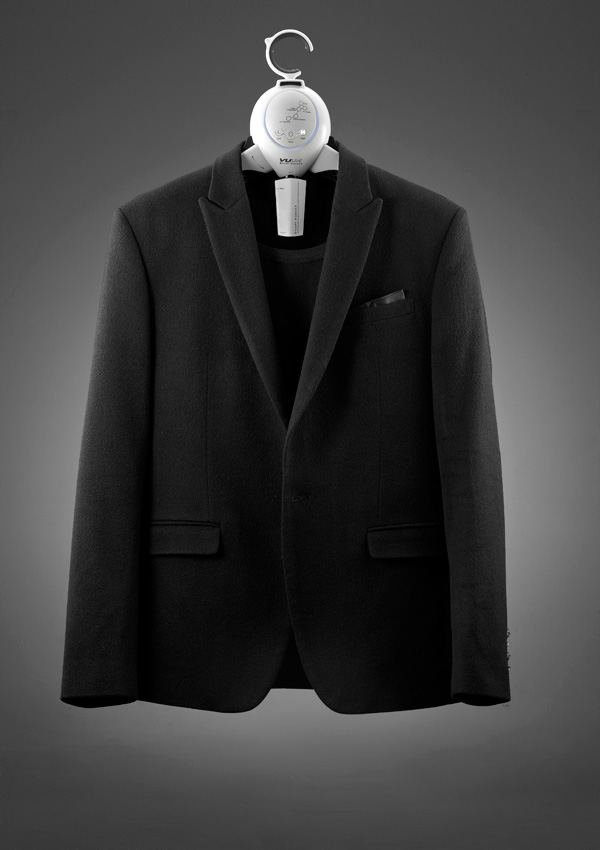 Smart Hanger by Beom-Seok Lee, Dong-Il Kim, Wan-Il So & Ki-Won Song
Smart Hanger by Beom-Seok Lee, Dong-Il Kim, Wan-Il So & Ki-Won Song
- Smart hanger that recommends clothes based on the weather forecast and doubles up as a clock. The flipboard, aside from displaying the time, also shows you the temperature outside, and when you’re about to step out, will recommend clothes that best compliment the weather outside. The flipboard has a pretty detailed catalog. The level of detail given to forecast representation is pretty neat too, for example, the Take-Off can tell you if it’s raining, about to rain, or if there’s a storm outside, just by showing you an open umbrella, a closed umbrella, or an overturned umbrella. The device works over Wi-Fi to stay on top of things, while also connecting with your phone to know when you usually step out, so that it can recommend apparel to you just as you’re getting ready to step out!


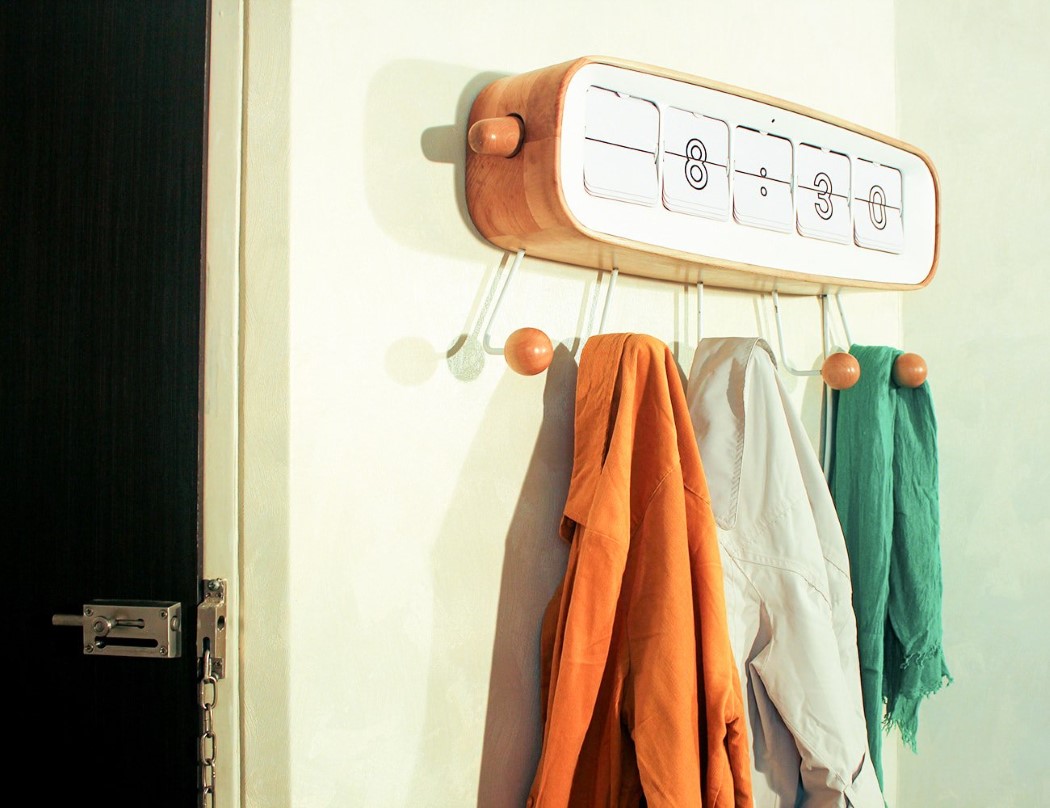 Take-Off Hanger by Take-Off
Take-Off Hanger by Take-Off
- New product using the Thread mesh protocol and the Nordic nRF52840 SoC is helping an upmarket Parisian clothing store improve its customer experience. Clothing hangers aare each equipped with a Nordic nRF52840, an RFID reader and a small display. When a customer picks up an item, they can select a size from the display and a member of staff will bring it to them, wherever they are in the fitting room or elsewhere in the store. The concept means less items need to be out on display, improving the selection on display and/or reducing clutter. Thanks to sensors inside the hanger, it knows what item of clothing is attached. The device records how many times per day the item has been touched and the number of times the hanger has been removed from the rack. This data is sent to the store system once per day. Over time, such data gives Galeries Lafayette a lot of useful information on the in-store experience, allowing them to draw their own conclusions about the popularity of certain items and trends.
Unistudio – Galeries Lafayette – Cintre connecté
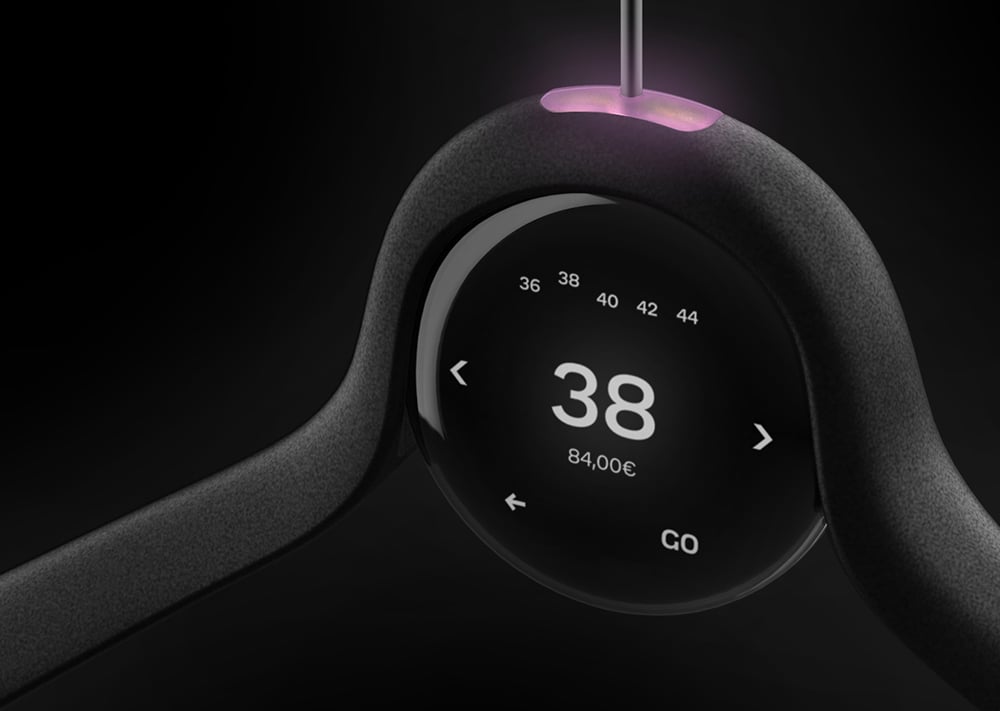
 Galeries Lafayette Hanger by Galeries Lafayette and BLUEGRioT
Galeries Lafayette Hanger by Galeries Lafayette and BLUEGRioT
TWO SYSTEMS:
#1 Hanger/ wall hook device
#2 Table top stand
Functions:
Tracks the number of times you wash + remind you to wear one when you go out as its not really habitual to some of us yet (cough me cough)
SMART PLANTER
BASIS:
Various conditions are essential factors which have to be provided for a house plants survival, including water, humidity, a suitable growing medium, correct temperatures and of course “light”. I feel like people always pay a lot of attention to the amount of water they give their plants, and tend to neglect the other factors like light. All plants require sunlight to grow, but differ in the amount and intensity of light needed to prosper. Knowing how much light a plant needs to thrive seems like a relatively simple issue, but can sometimes be perplexing. In my opinion, there are many smart products in the market that allow you to water your plants with an appropriate amount of water based on the moisture in the soil, etc; but a lack in products that help you track how much light your plant is getting.
Although some people manually map the sunlight in their gardens/homes, I think its rather troublesome as the sun changes position in the sky throughout the year, so an area that is mostly shade in spring and fall may get more intense sunlight in the summer when the sun is higher in the sky (and hotter). This means that they would have to map multiple times through the year. There are even more unpredictable factors that could always be affecting the sunlight mapping, such as the coverage of leaves due to growth -> manually mapping out the sunlight yourself is not efficient and accurate as it is not a guaranteed constant. A smart device would be of much more help.
DETAILS:
Plant labels identify the amount of sun a plant requires as full sun, part sun, part shade or full shade as defined:
- Full sun – Plants need at least 6 hours of direct sun daily
- Part sun – Plants thrive with between 3 and 6 hours of direct sun per day
- Part shade – Plants require between 3 and 6 hours of sun per day, but need protection from intense mid-day sun
- Full shade – Plants require less than 3 hours of direct sun per day

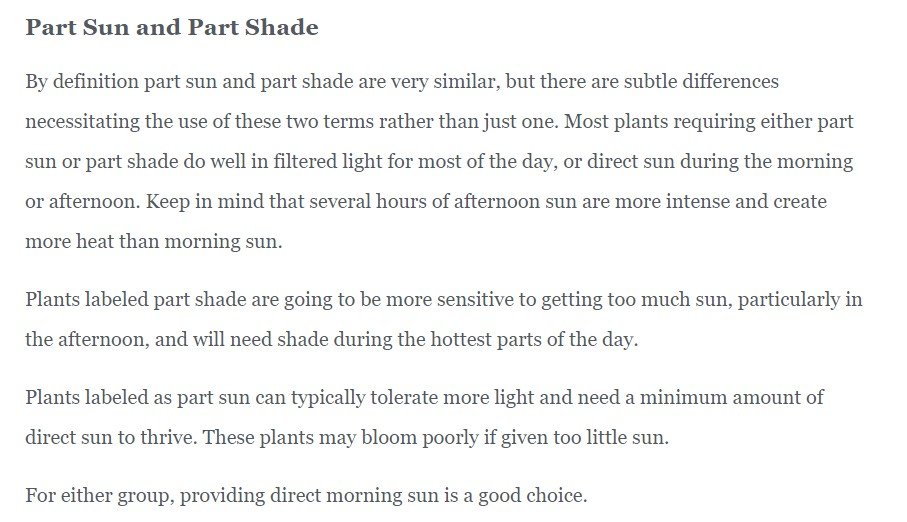
 terminology of light required and their meanings
terminology of light required and their meanings
If a plant is not receiving enough light or too much direct sunlight there are tell tale signs to look out for-
Not Enough:
- Flowers not blooming
- Weak, slow and spindly growth.
- Yellowing leaves which eventually fall.
- New leaves remain smaller than usual.
Too Much:
- Flowers shrivel up and die quickly.
- Leaves shriveling up and drying.
- Leaves fade in colour.
- Drooping leaves.
CURRENT PRODUCTS:
- SunCalc
It is a sunlight calculator you stick in the soil. Designed to measure the amount of solar energy available during the growing season, it ideally helps you put your plants where they want to be. When turned on, the meter measures the amount of light for 12 hours and determines how much sun you have. This product sounds like it works, but after reading about it on gardening forums, I realized how flawed it was. Firstly, because the device is not smart, you have to manually turn it on for it to start recording the light-> this means that if you turn it on after sunup (say at like noon instead of dawn), then it will measure the light only for a part of the day and provide the wrong readings. Secondly, although its ad claims that “This meter measures the duration and intensity of sunlight falling at a given spot over a 12-hour period”, it does not report them. It only reports sun, part sun, part shade or shade. You get neither duration nor intensity readings-> user doesnt really gain much insight from this product. Hence, this product is not useful because it doesnt allow users to gain more information, nor does it really provide an action after -> equivalent to the user just mapping out the sun exposure himself

- Xiaomi Smart Flower potThe Xiaomi Smart Flower Pot is a medium size plastic pot, with the built-in wireless connection (Bluetooth 4.1 BLE), and several other sensors. Also, it comes with with a unique application that allows you to control the pot. The pot can communicate with any smartphone via Bluetooth, to send information from the sensors. The Sensors monitor the moisture and salt content of the soil. If the plant is lacking something like water , then the Xiaomi pot will “remind” you through the application, that it is time to water the plant.
You have to add the Xiaomi Smart Flower Pot to the application for use. You can choose from huge database of flowers. From the application menu, you can check the battery charge level, check reports (log). If you own more than one pots there are summary reports. The general menu with indications displays the properties and description of the plant.


- LUMEEquipped with sensors for water, light and soil levels, the specialized pot ensures that the plant is well-cared for at all times. Information is relayed wirelessly to the user’s smartphone, giving them real-time updates on the plant’s health and the best way to tend to it.
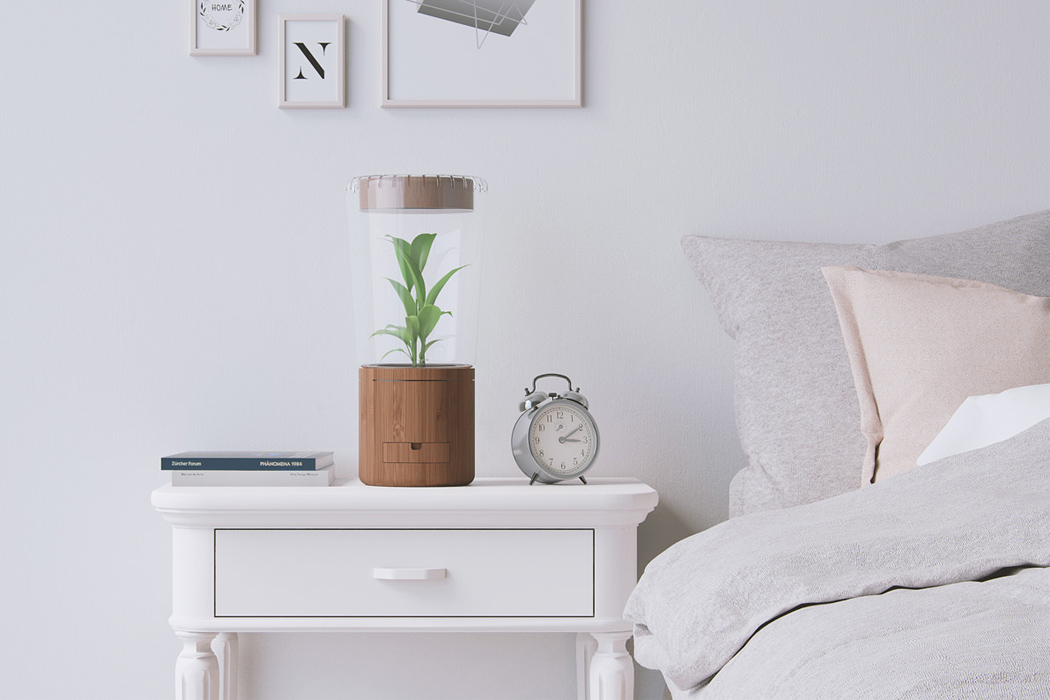
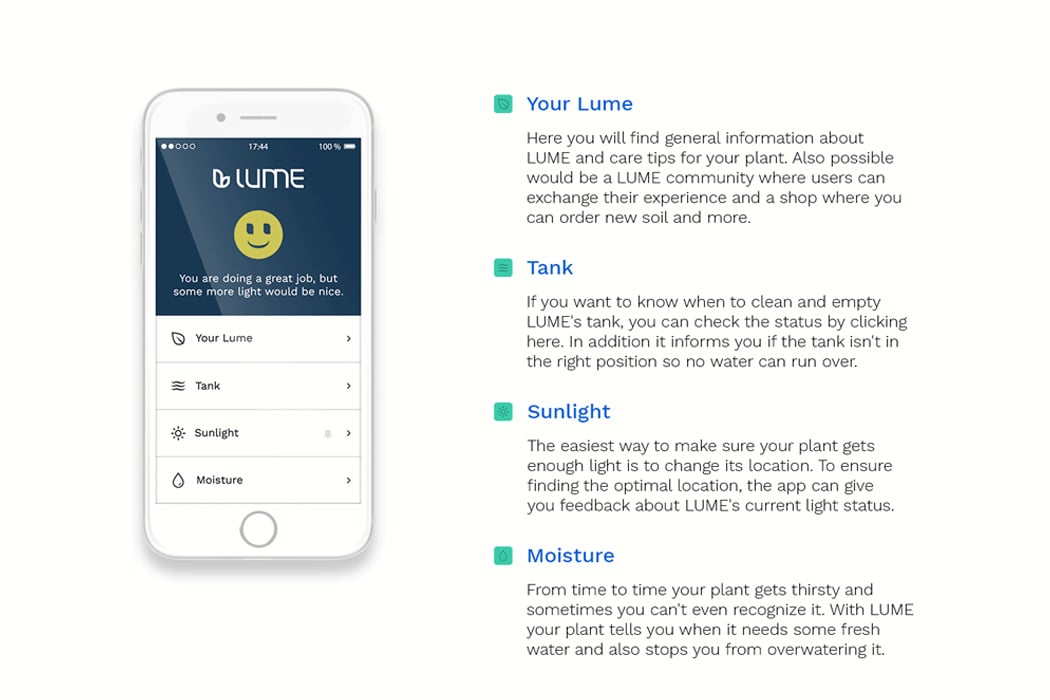
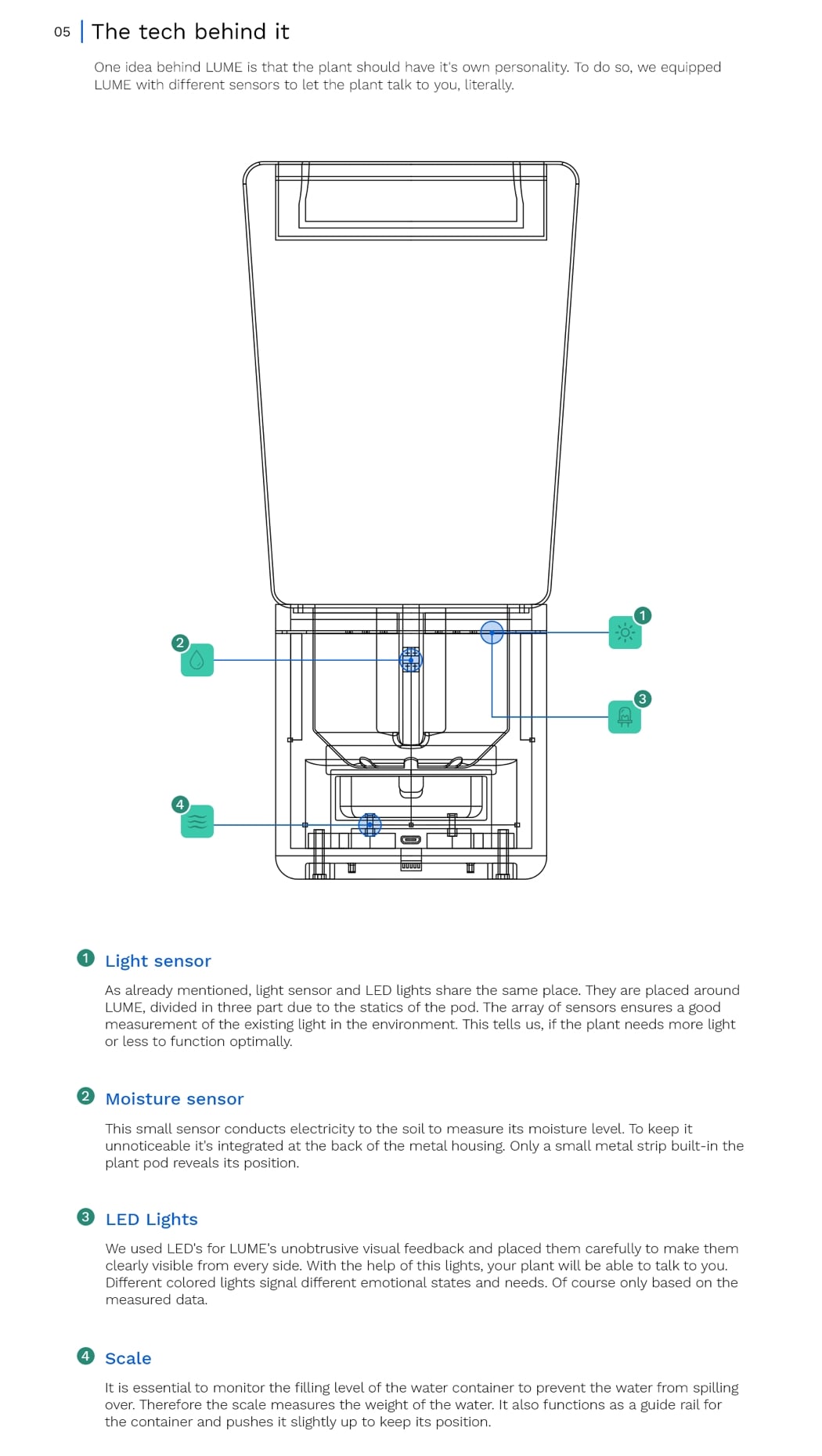
- NestSensors detect the levels of Ethylene, so when the fruit, vegetable or herb is ripe or ready to eat, notifications are sent to your Nest app so you can harvest and enjoy the freshest home-grown food! The Nest app develops an accurate user profile the more you use it by taking your dietary preferences to suggest personalized recipes using the freshest ingredients from your hanging garden. The recipes you select are then fed back into the Nest database to generate better recipe suggestions and recommendations for the hanging garden. As an added bonus, the hanging garden also work with your Nest thermostat to circulate air in your kitchen with bladeless fan technology. It also illuminates your worktop with built-in LED lights.
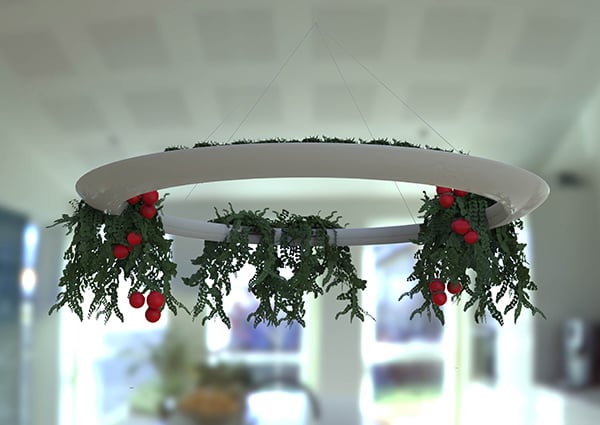
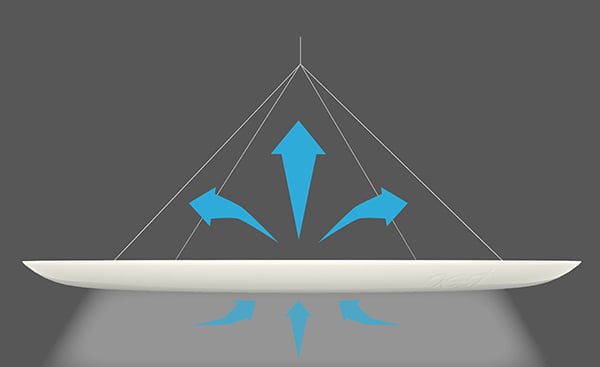
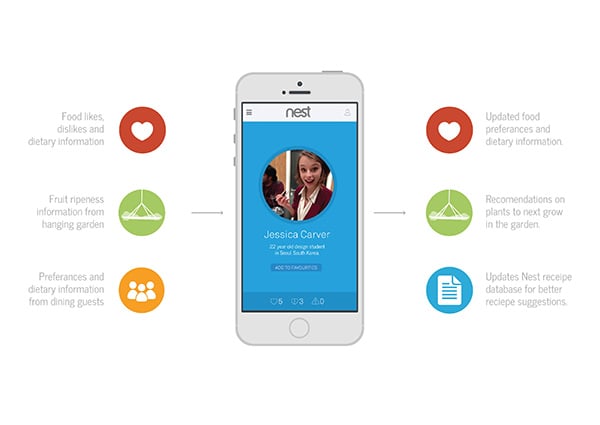
- Bloomengine
A completely self-contained, self-sustaining planter, the Bloomengine can grow and monitor your plant while guiding you through the process, informing you of the plant’s progress and needs. the planter sends you plant-health related data to your phone, allowing you to keep tabs on the plant’s growth. There’s also a Full-HD camera mounted on the top that can take time-lapses of your plant growing. You can easily customize environmental conditions for your plants via the Bloomengine application available for Android and iOS devices. Watering and lighting times can be scheduled and even time-lapse can be set according to your plants and preferences.
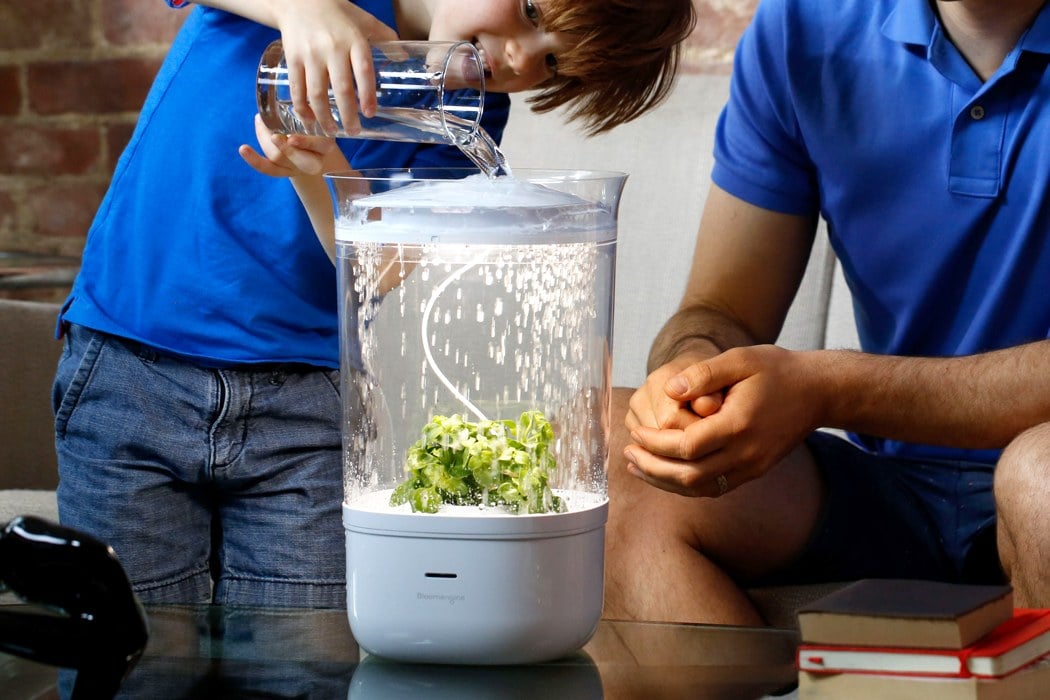

- Uplift Planter
The Uplift Planter is an elevated plant stand with an app-enabled grow light designed to seamlessly integrate living green into any space. The Uplift Planter has built-in brains, meaning you can pair it with the app over WiFi for granular control over light intensity, cycles and schedule, from a few feet to miles away. Includes recommended presets for partial shade, partial sun and full sun plants.
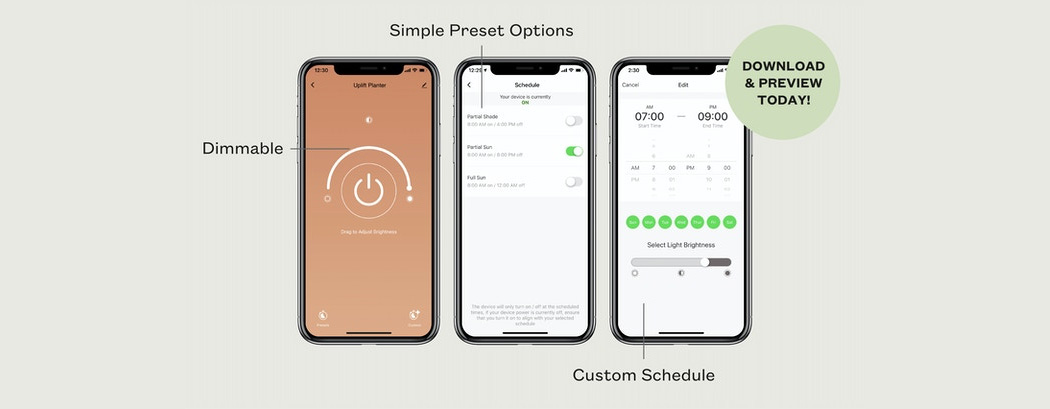

- Koubachi Wi-Fi Sensor
Koubachi have a connected plant sensor to go along with the app. They measure moisture, light, and temperature from the soil near your plant, and use that information along with the compiled knowledge of their Plant Care Engine to tell you exactly how to make your garden flourish. If you have no idea what kind of plant you’re dealing with, this is the most user-friendly plant identification software I’ve come across. Plant Finder will offer options about the shape of the leaves, the position of the stem, even the location of purchase, and you can pick from the provided pictures whenever you see a match or skip the question when you’re stumped. The database will use any responses you give it to make a guess at your plant type, and will show you pictures to help you decide if it has the right one. If not, you can keep right on going through the questions.This handy feature lets you see immediate readings for moisture, sunlight, and temperature.
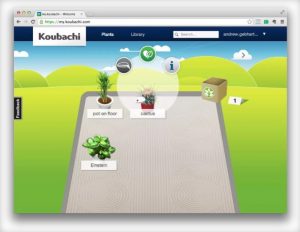
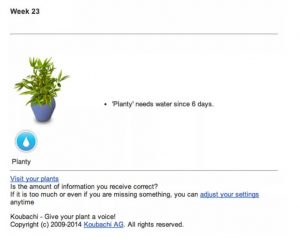
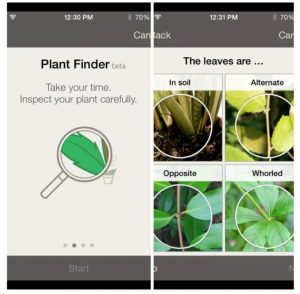
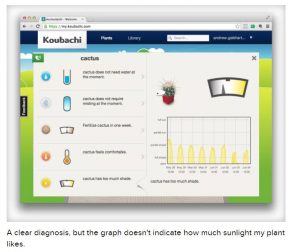
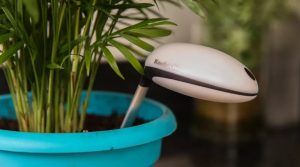 koubachi website and app
koubachi website and app
- Growing up
Interesting design: Adjustable pot design!

- Plant Window
Interesting location: planter right at the window
- iGrow
Interesting design: Holds a weeks supply of water, while avoiding stagnant water or any water spill
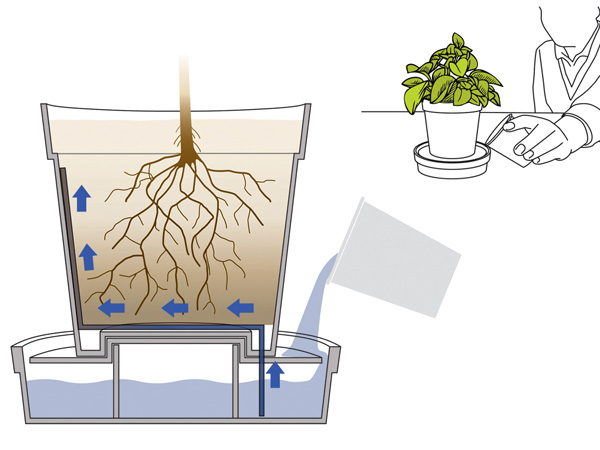
- Ma-ce-ta series
Interesting design: Mix and match with different shapes + height
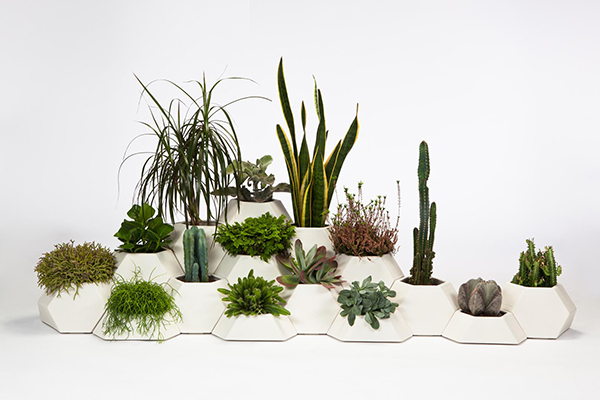
- MOJU planter
Interesting design: sleek and modern. nice aesthetics
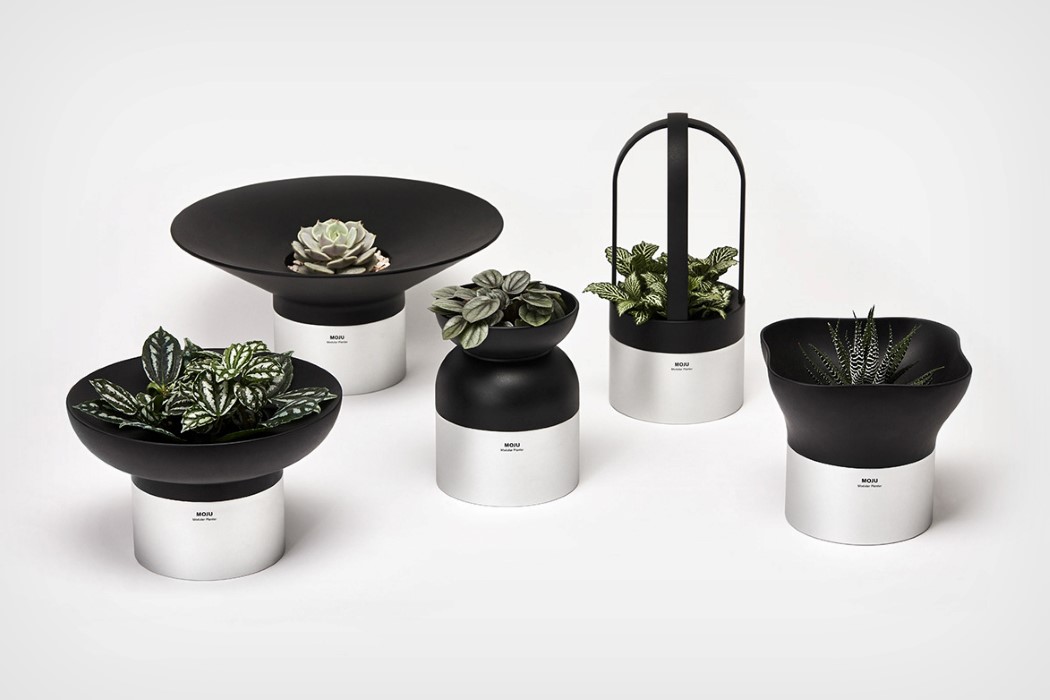
- ToThum
Interesting design: each modular part has a unique shape that organically blends with the others. Also has its own manual irrigation system that allows the water to reach the plants on all the levels at the same time


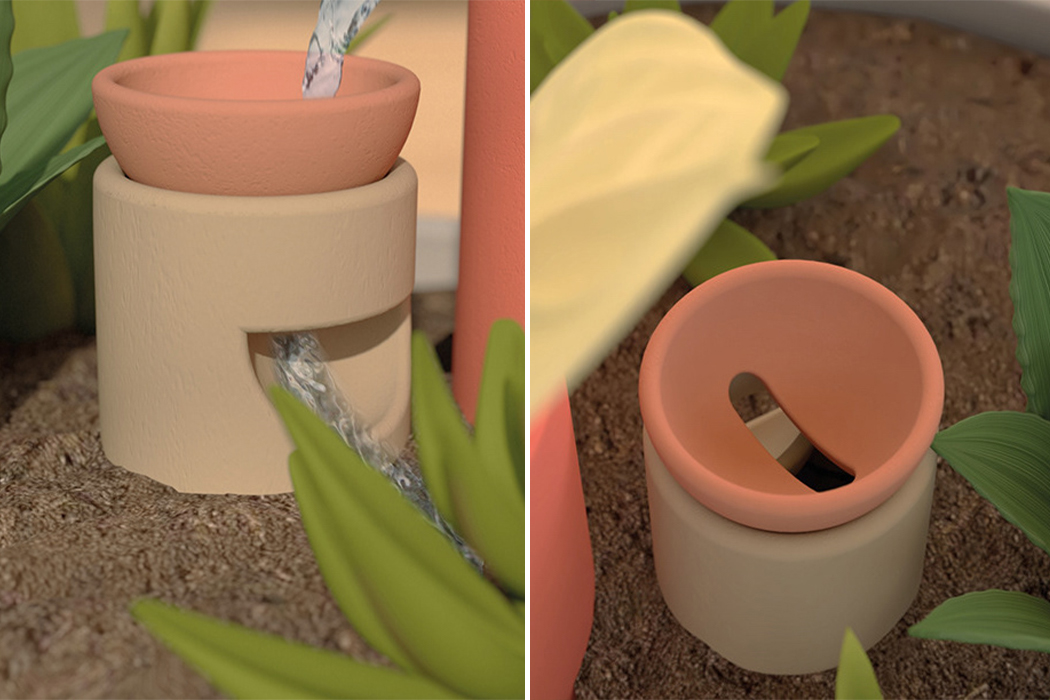
TWO SYSTEMS:
flower pot itself
– if gets too hot, pot moves itself? hmm
– might be better than designing something to just stick in soil -> seems like waste of materials
device to stick into the flower pot or beside it
– can be some cute decoration piece?
– if too hot the umbrella deploys to shade plant??
Keep in mind that the sun changes places in the sky depending on time of day and season, affecting how much light your plant will get. Monitor how the light changes throughout the year and adjust your plants position accordingly.
Links:
- https://www.houseplantsexpert.com/indoor-plants-lighting-guide.html
- https://southernlivingplants.com/planting-care/a-gardeners-guide-to-sun-exposure/
- http://theindependent.sg/ng-eng-hen-gets-into-national-day-mood-and-poses-with-a-face-mask-from-the-fun-pack/
- https://www.foreverfamily.com.sg/
- https://www.gardenmyths.com/sunlight-calculator-useless-product/
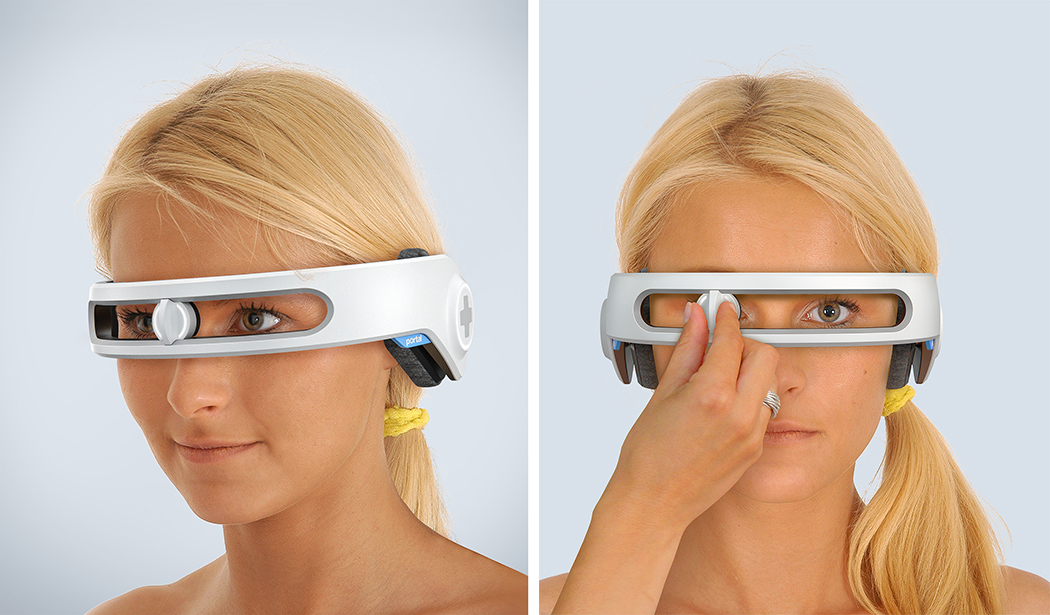
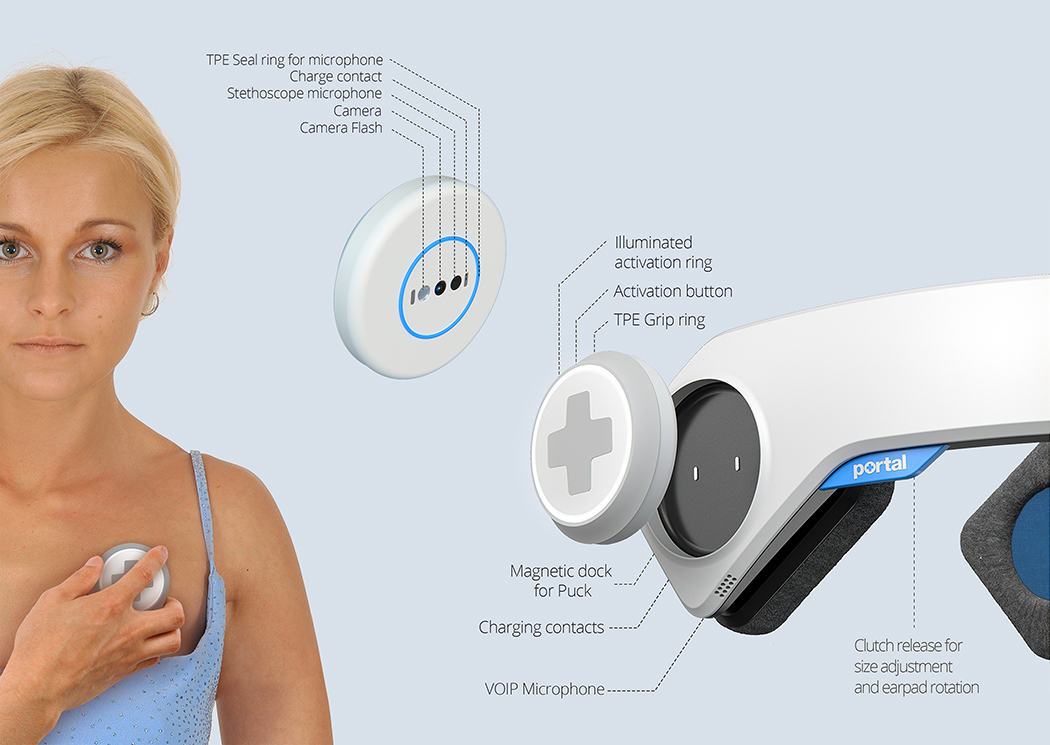 Portal is a wearable home telemedicine system that assists remote online communication with a doctor by providing basic body vital data. Data is collected via a detachable camera and stethoscope. The device is a headset that provides functional familiarity and audio privacy.There are a lot of perks to having such a device, maybe especially in our current times.
Portal is a wearable home telemedicine system that assists remote online communication with a doctor by providing basic body vital data. Data is collected via a detachable camera and stethoscope. The device is a headset that provides functional familiarity and audio privacy.There are a lot of perks to having such a device, maybe especially in our current times.
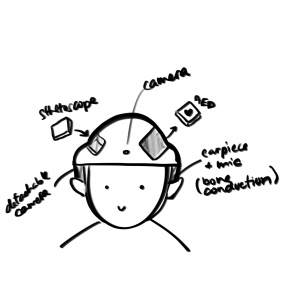
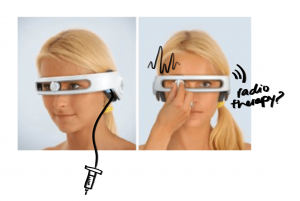
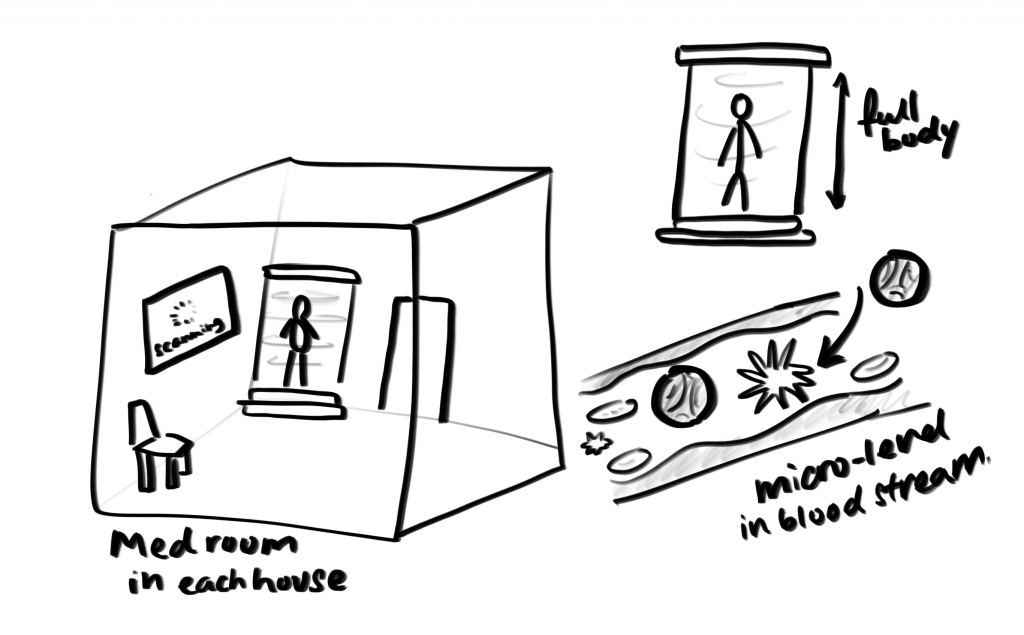
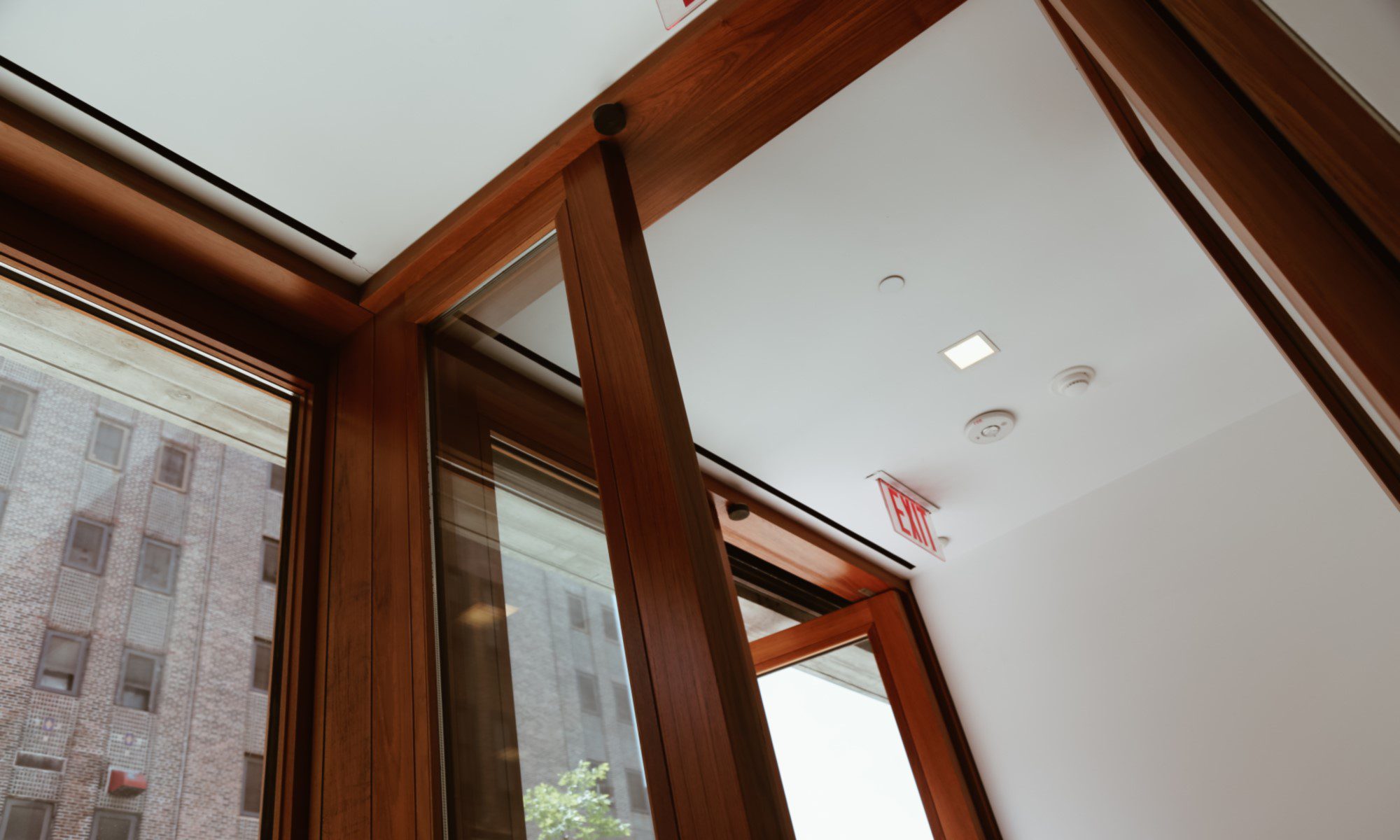
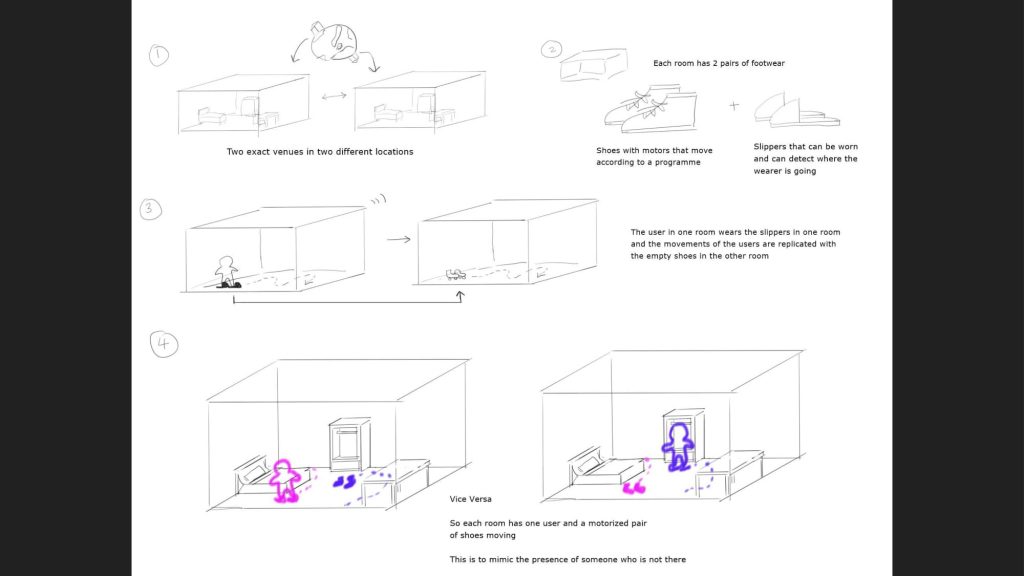

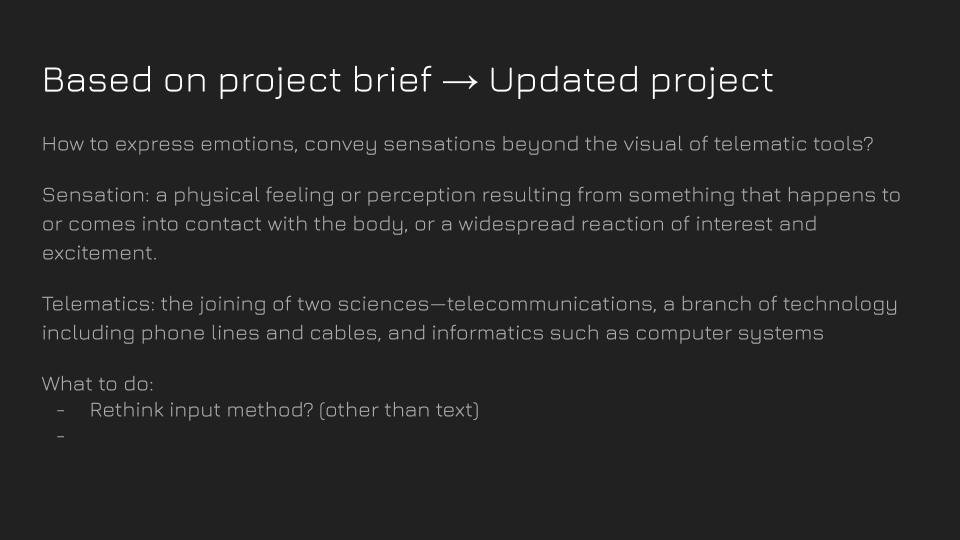
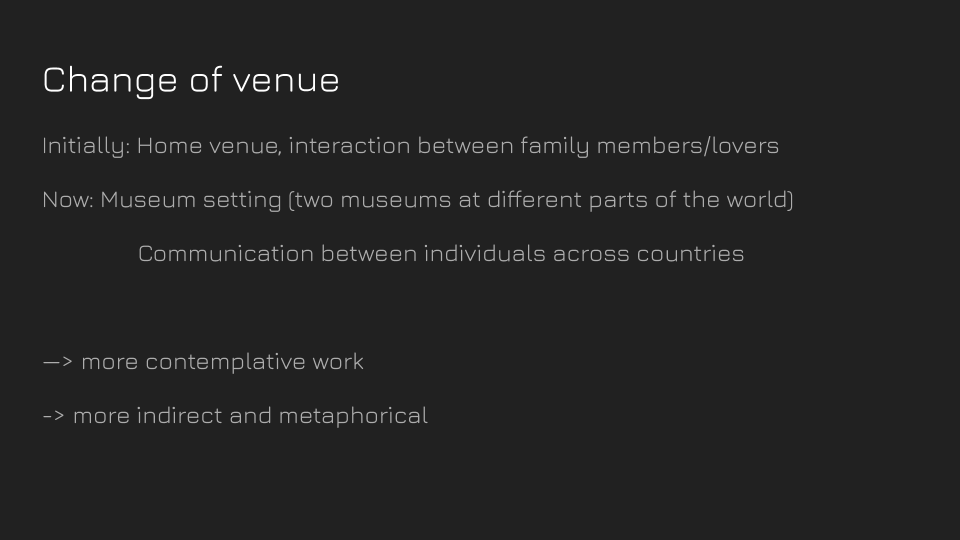
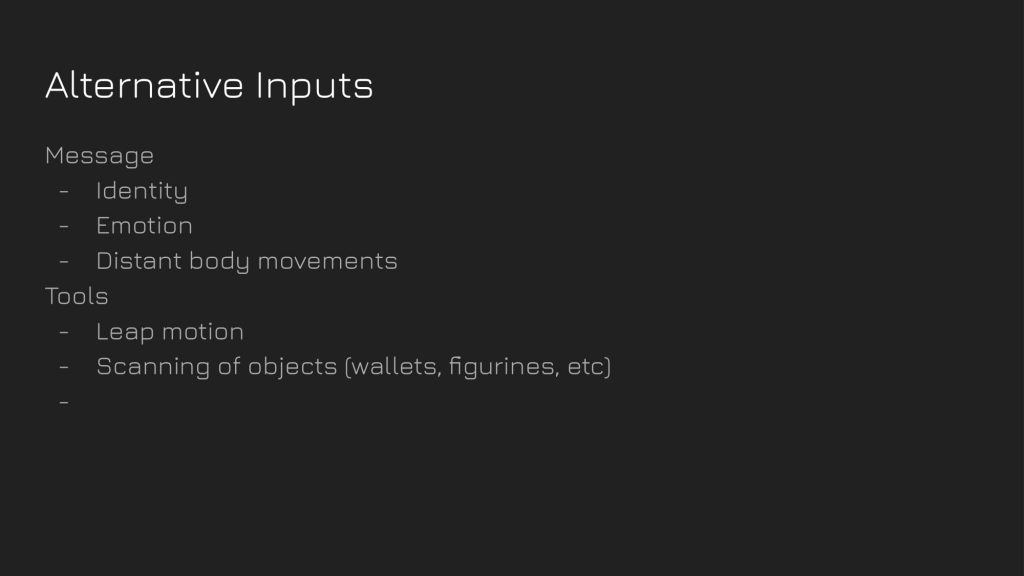
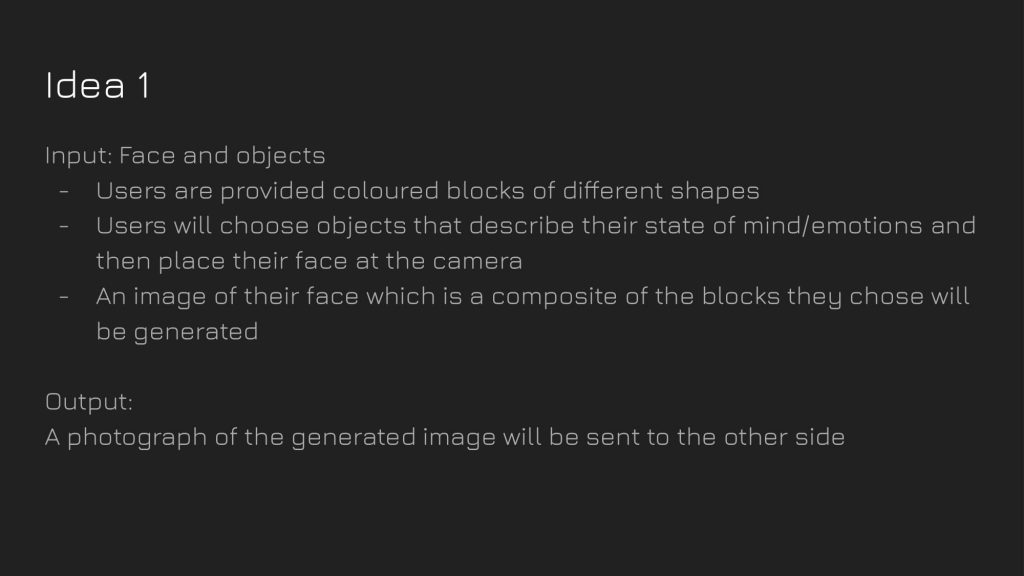
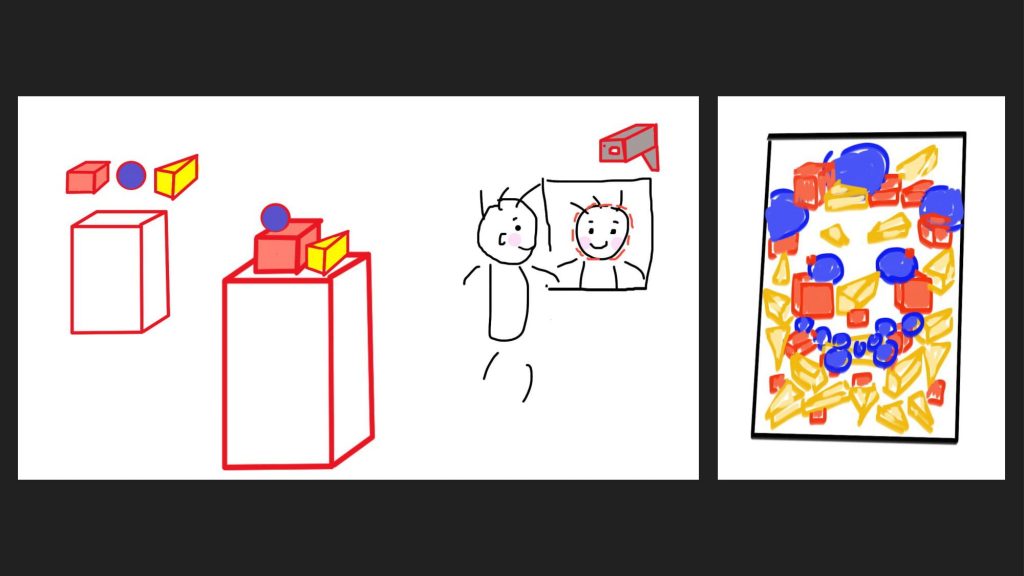
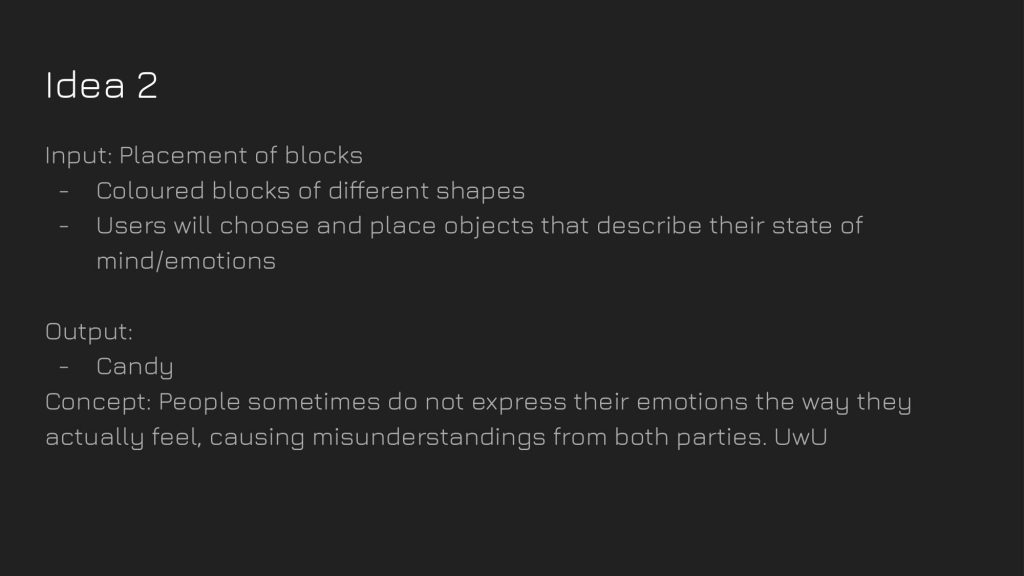
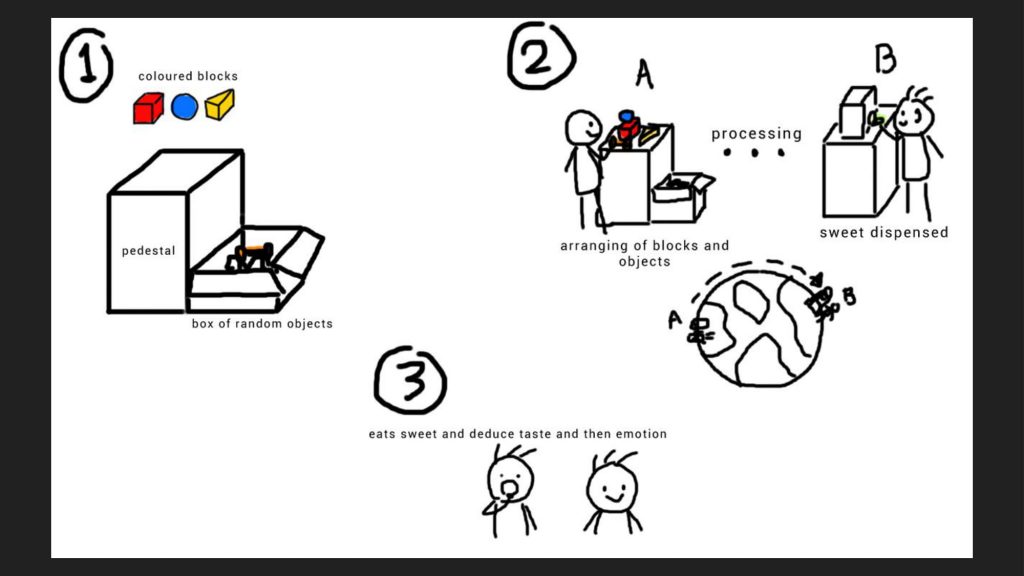
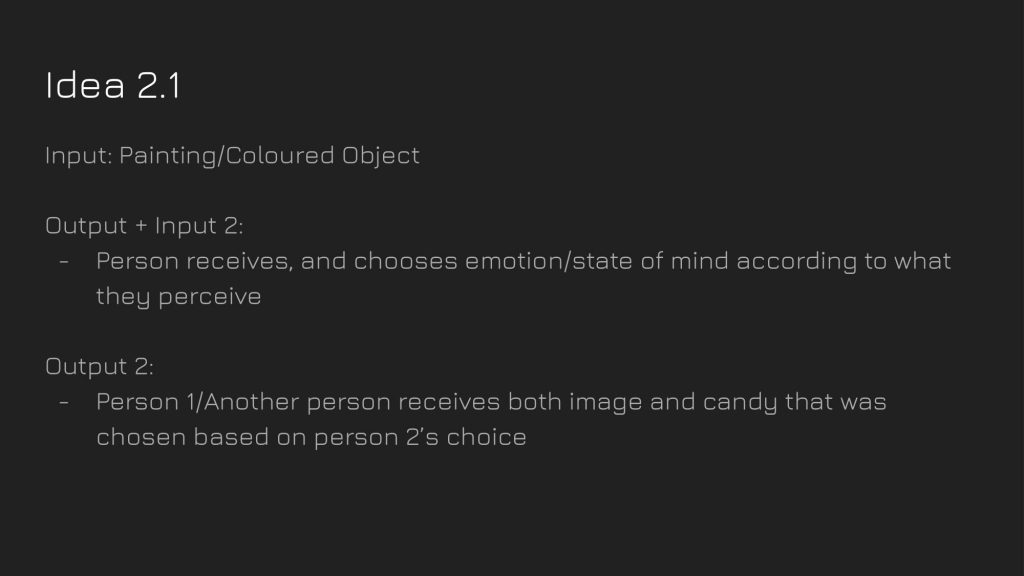
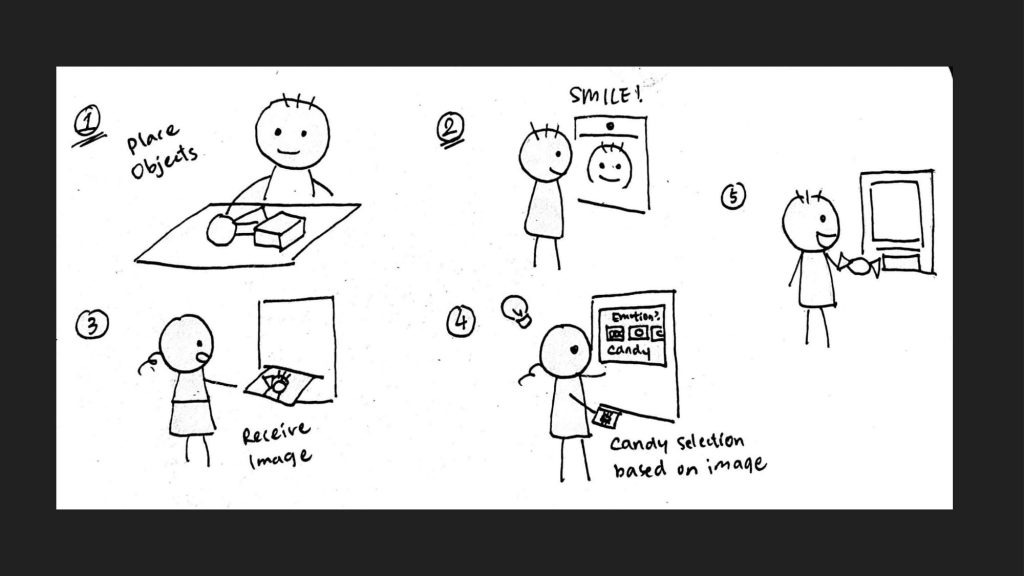
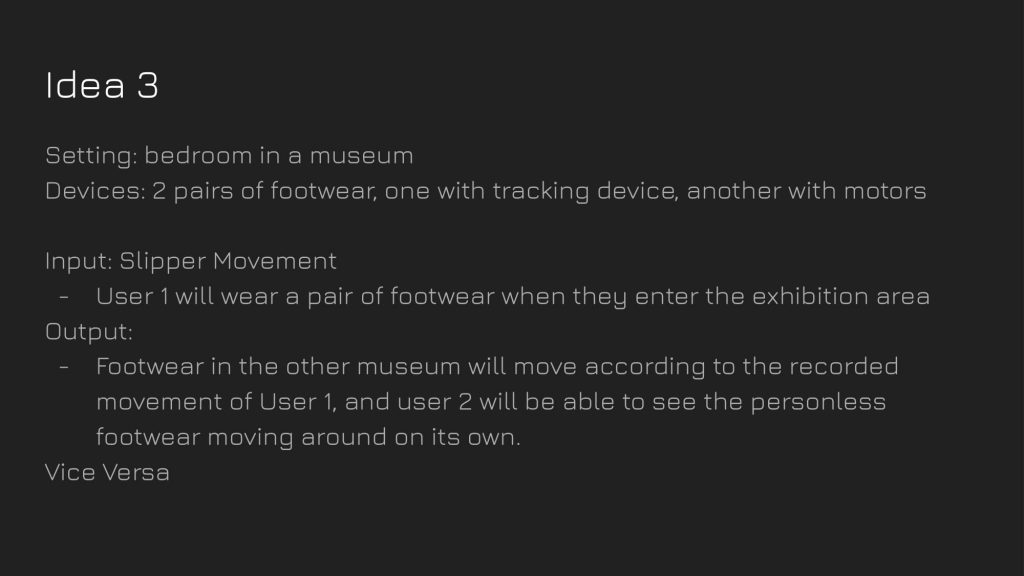
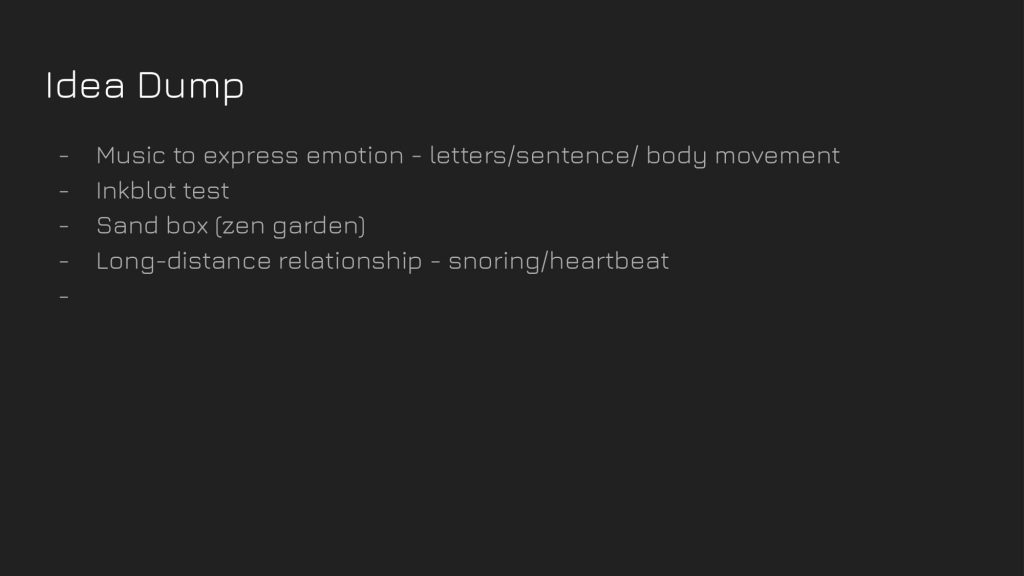
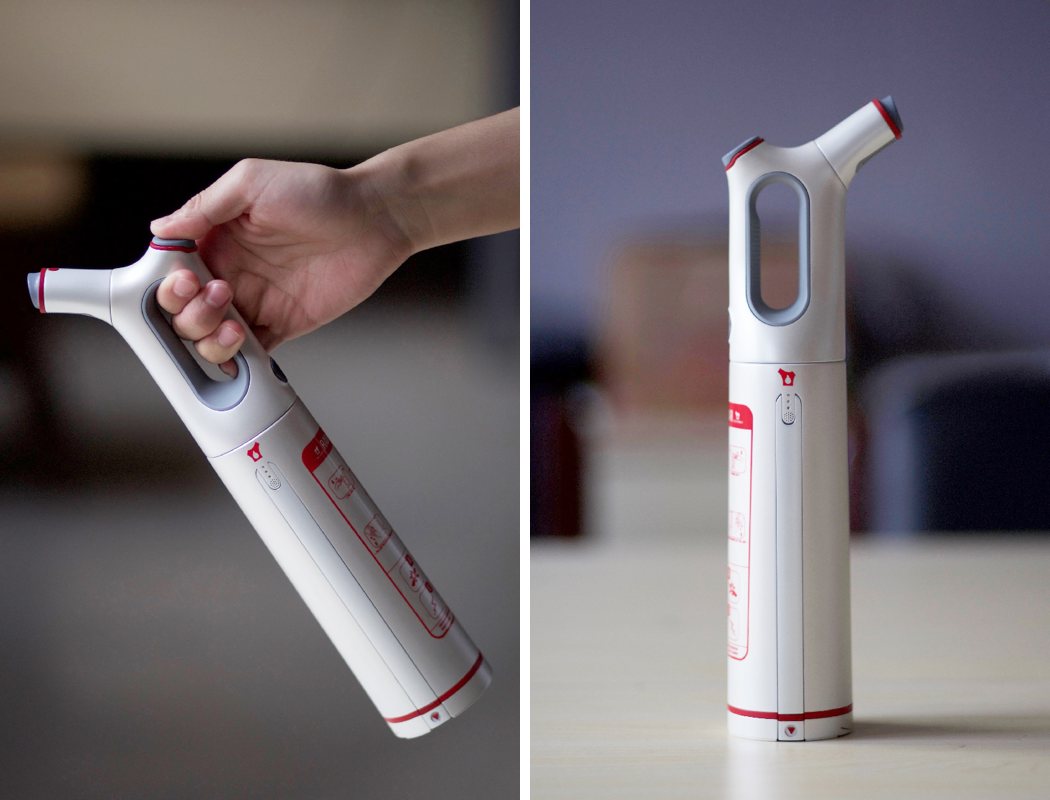
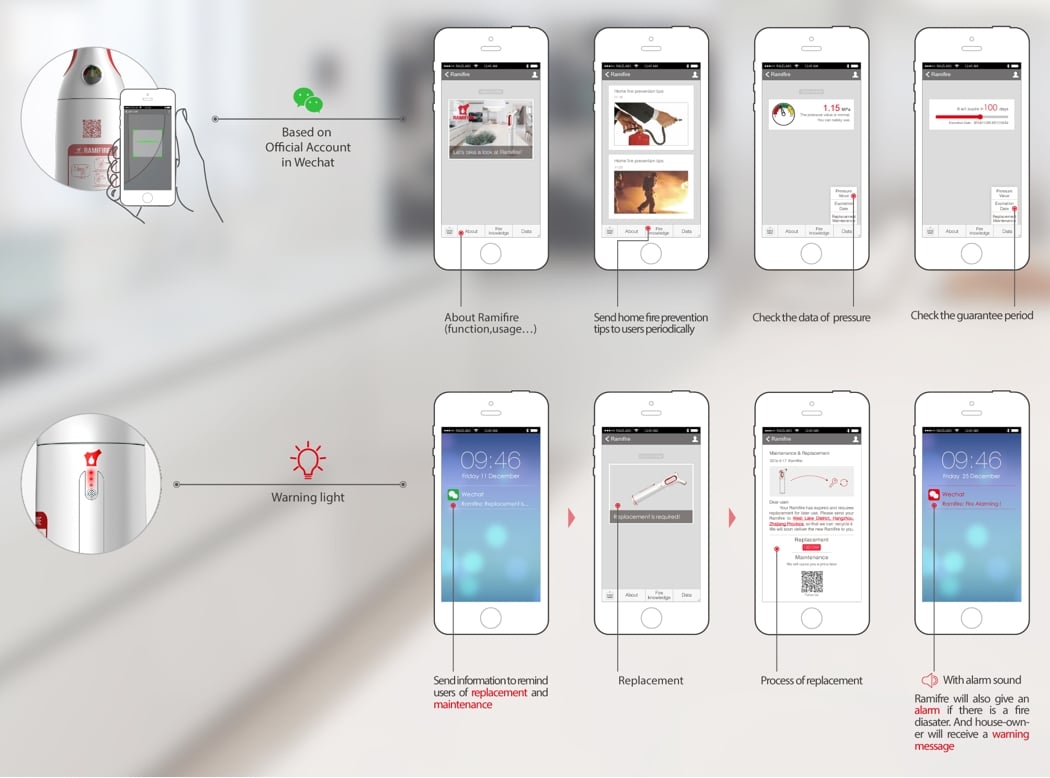
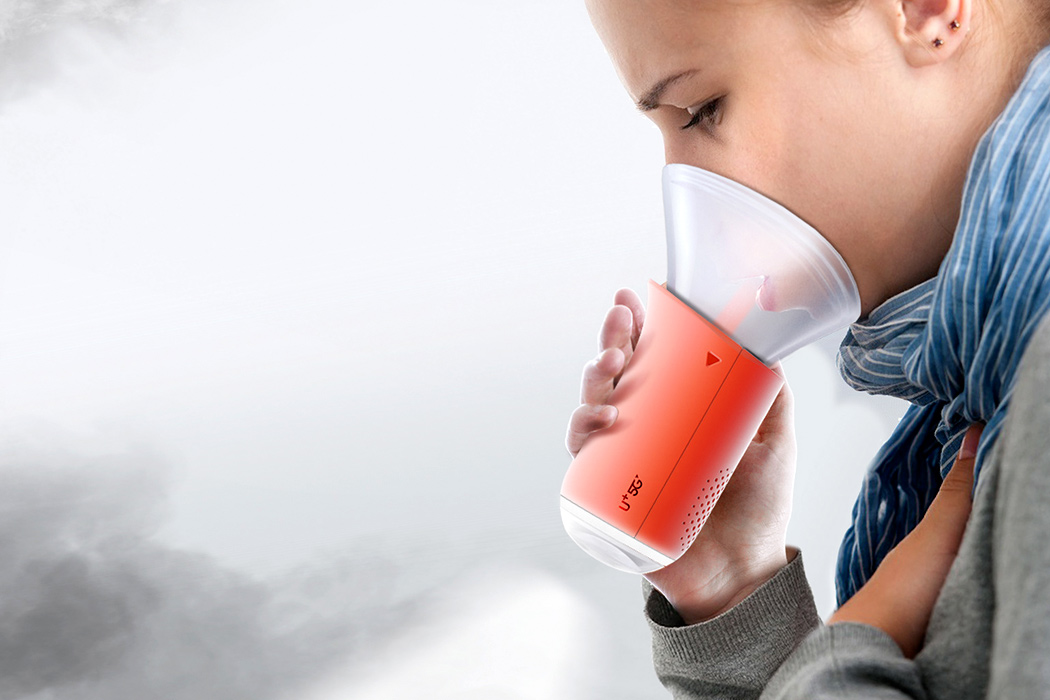
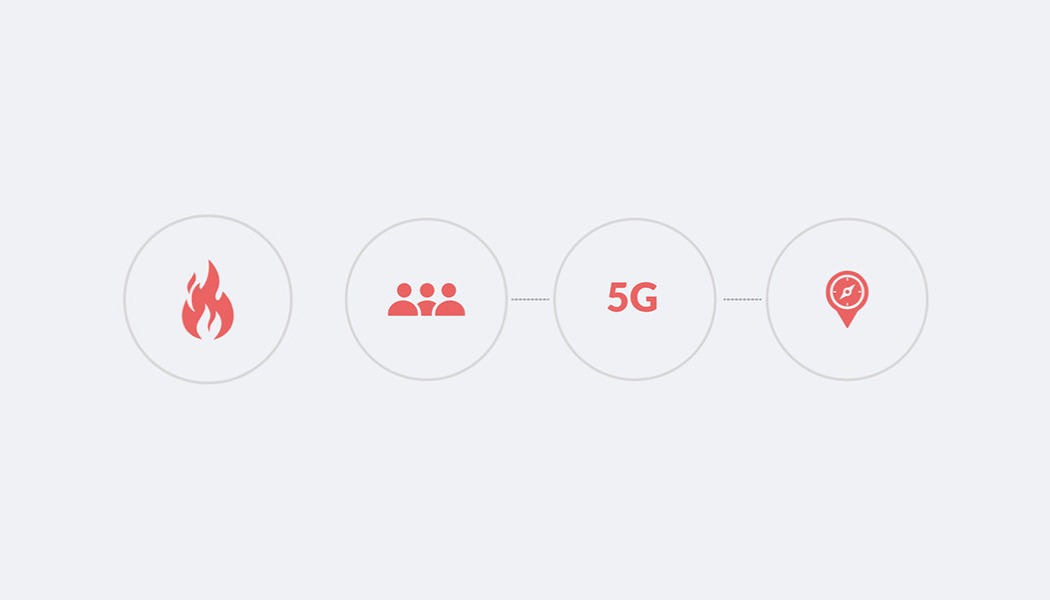
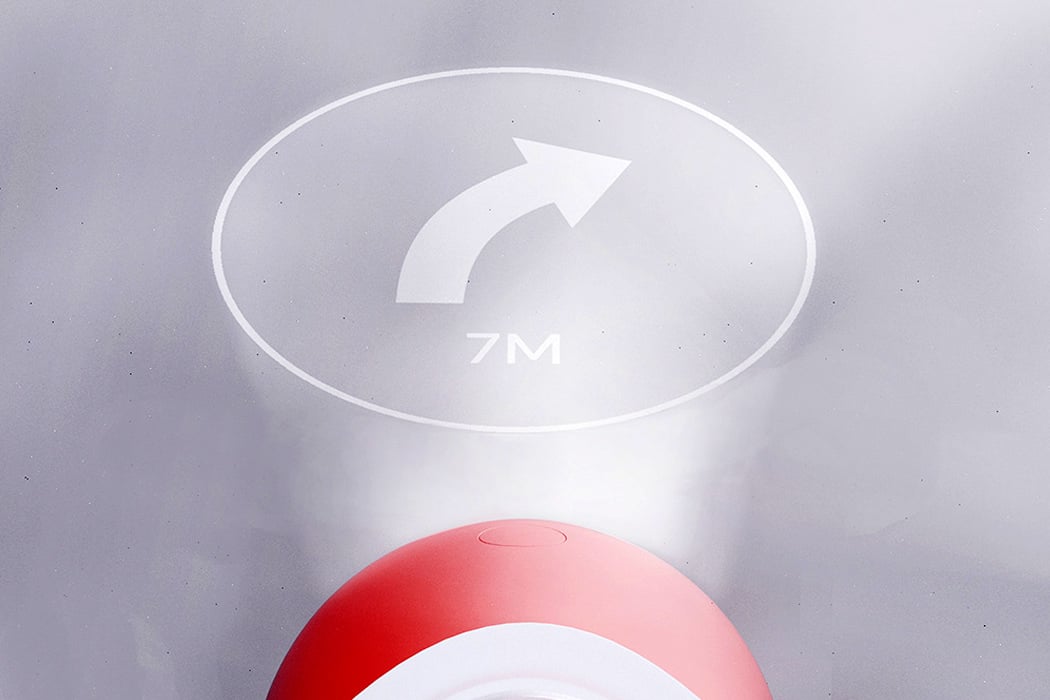
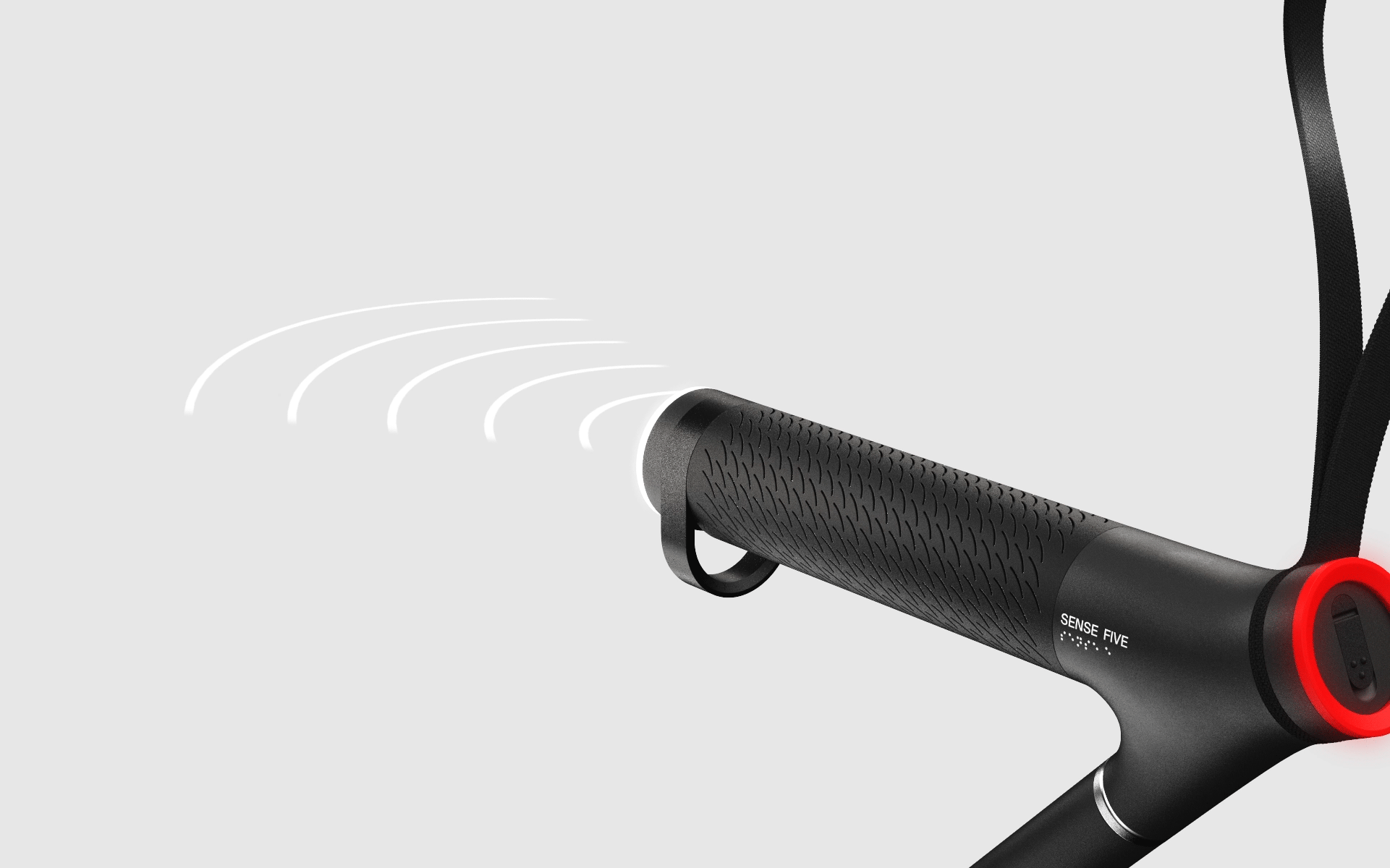
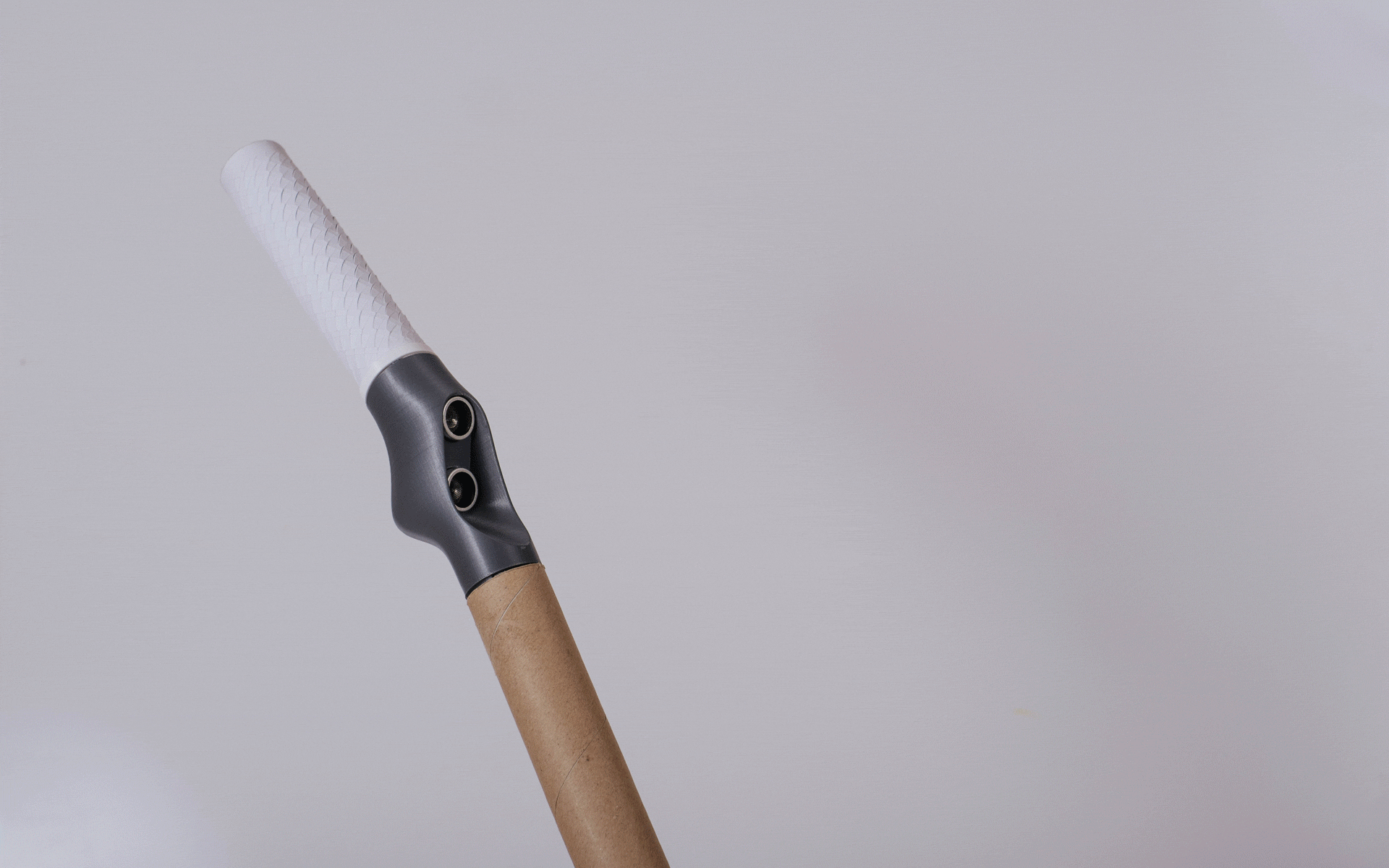
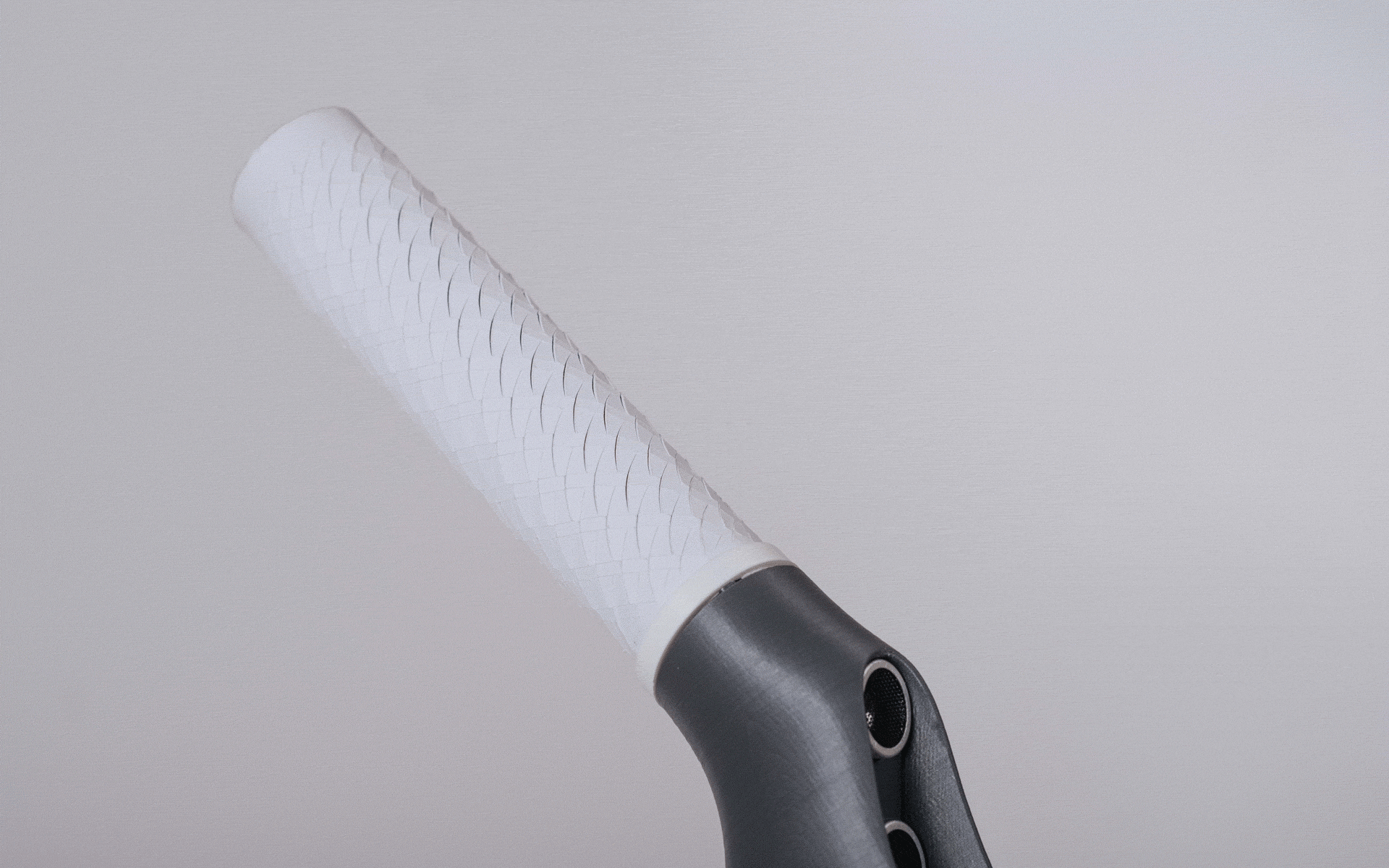
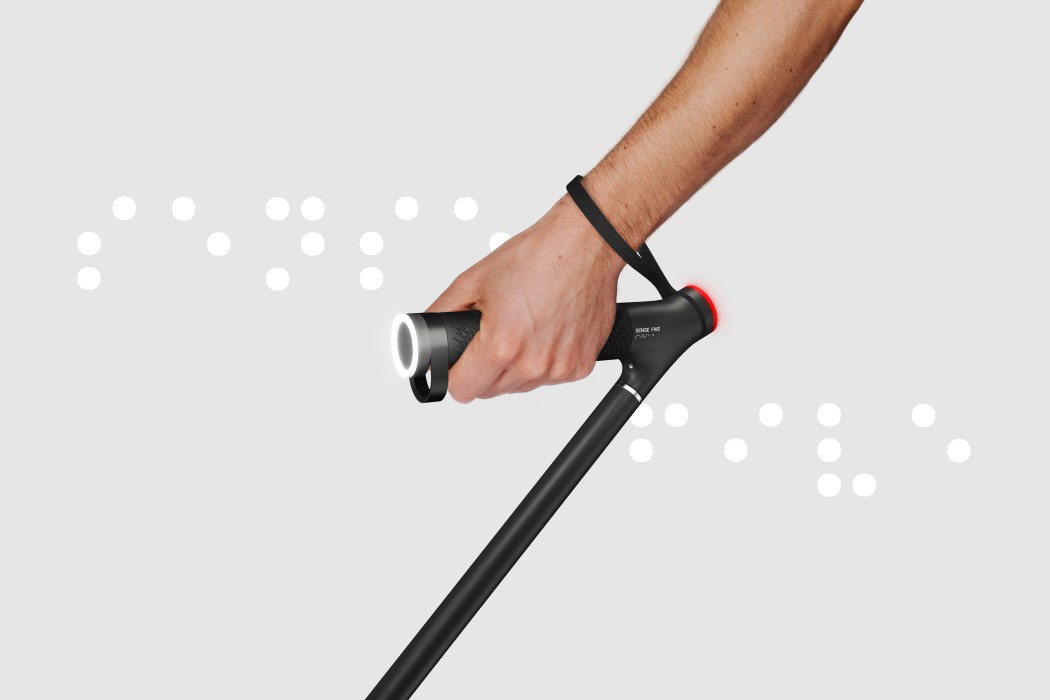
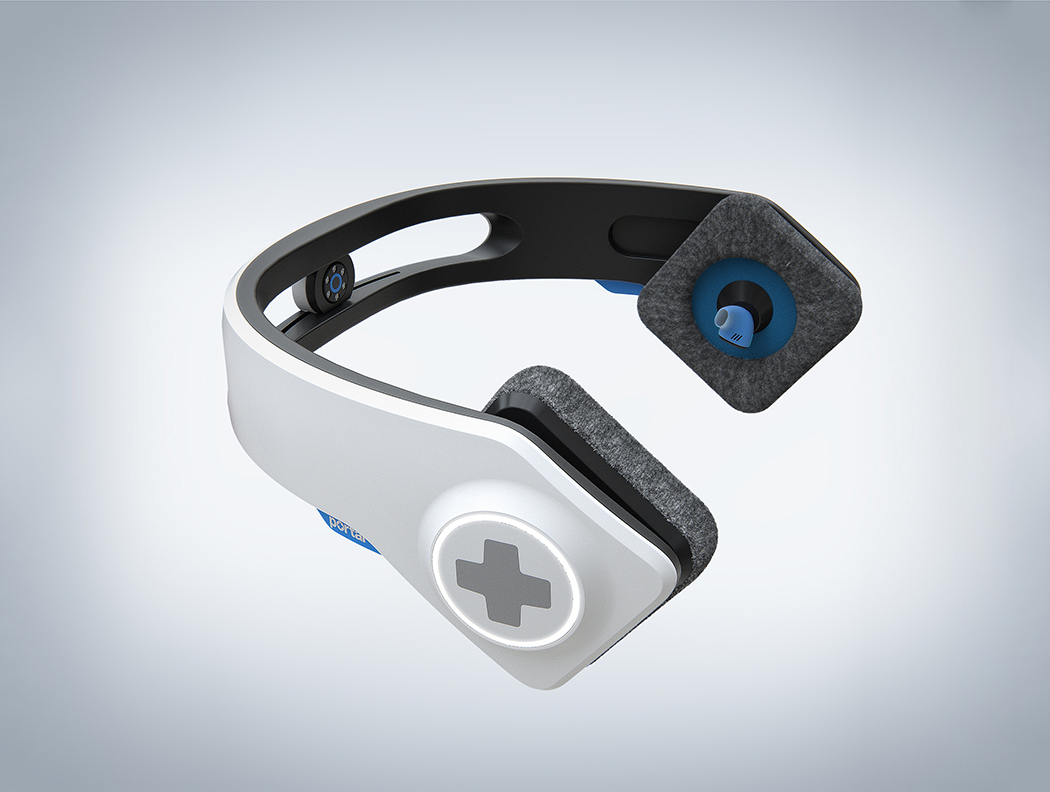
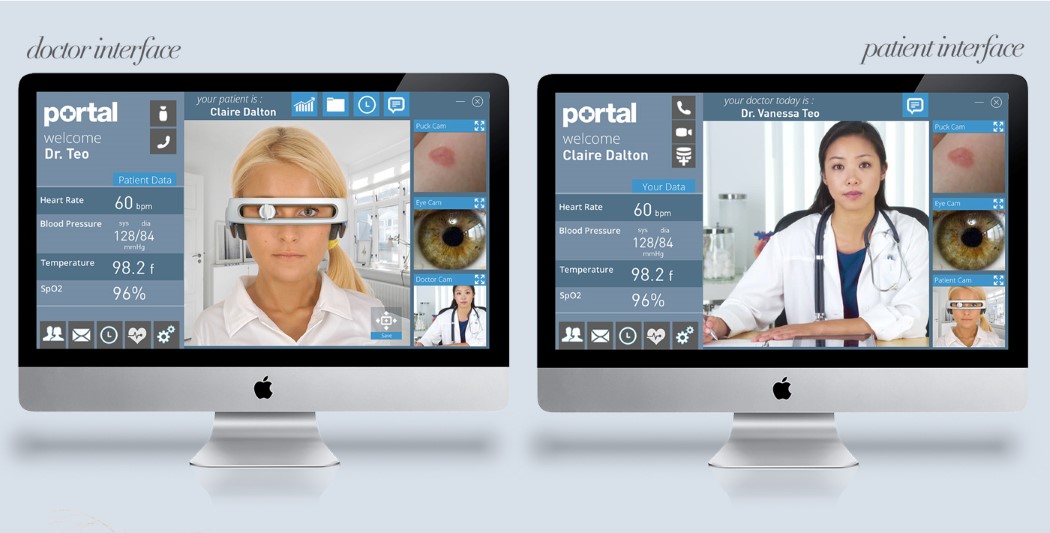





 Forever Family mask can only be washed 30 times
Forever Family mask can only be washed 30 times
 Smart Hanger by Beom-Seok Lee, Dong-Il Kim, Wan-Il So & Ki-Won Song
Smart Hanger by Beom-Seok Lee, Dong-Il Kim, Wan-Il So & Ki-Won Song

 Take-Off Hanger by Take-Off
Take-Off Hanger by Take-Off
 Galeries Lafayette Hanger by Galeries Lafayette and BLUEGRioT
Galeries Lafayette Hanger by Galeries Lafayette and BLUEGRioT

 terminology of light required and their meanings
terminology of light required and their meanings

















 koubachi website and app
koubachi website and app






